
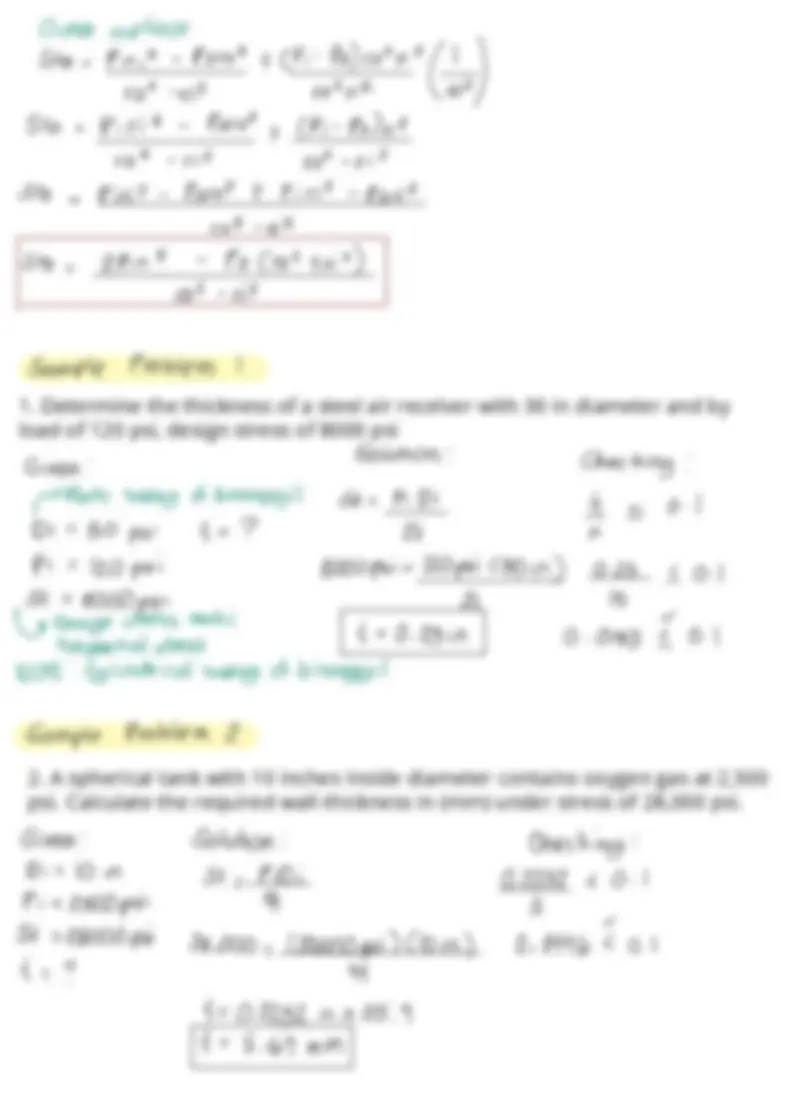
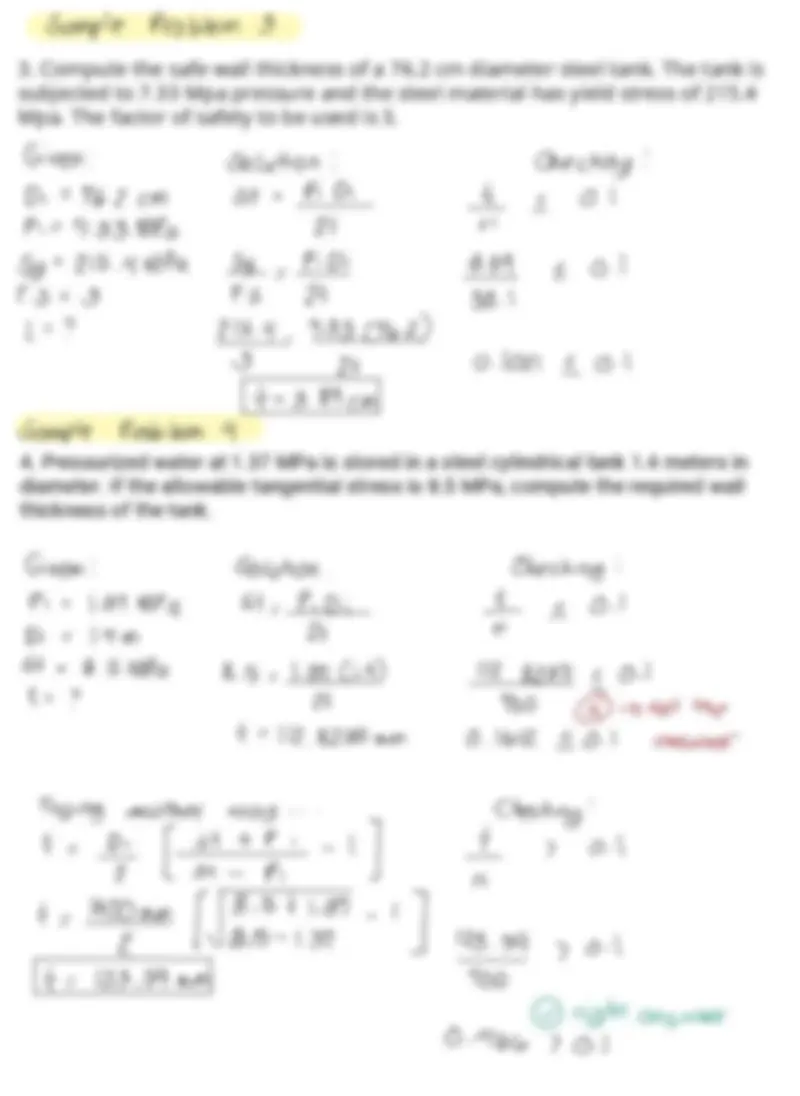
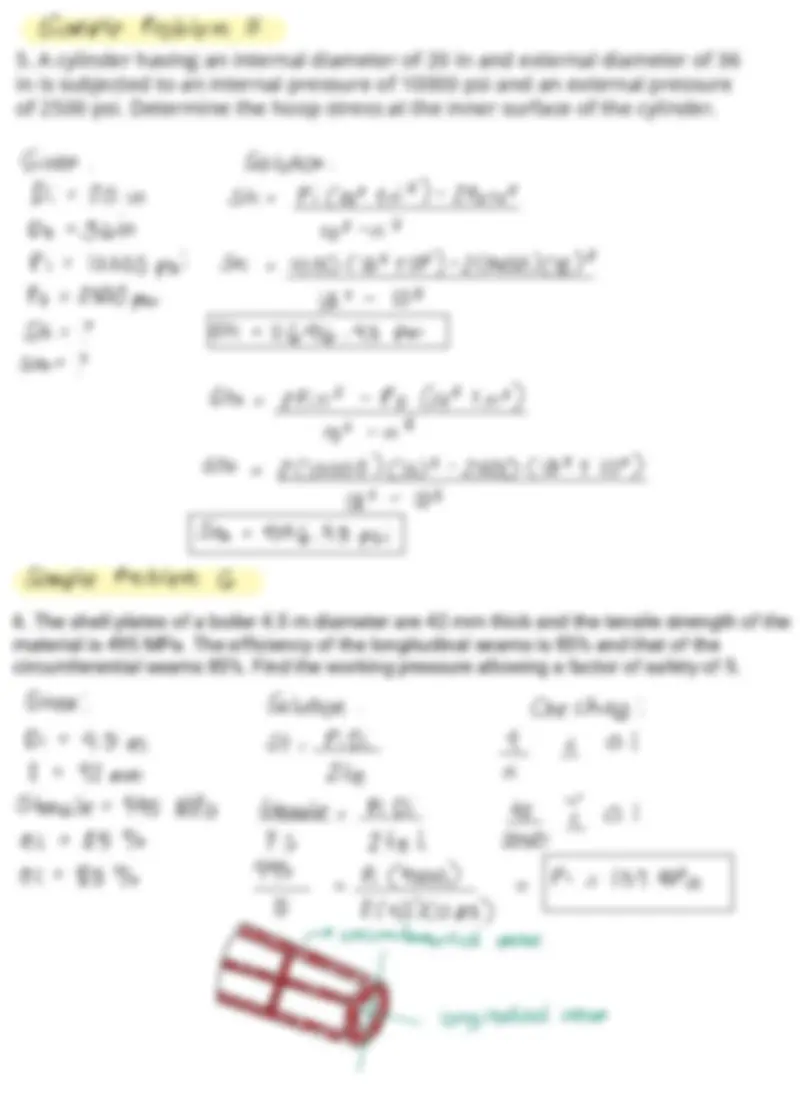
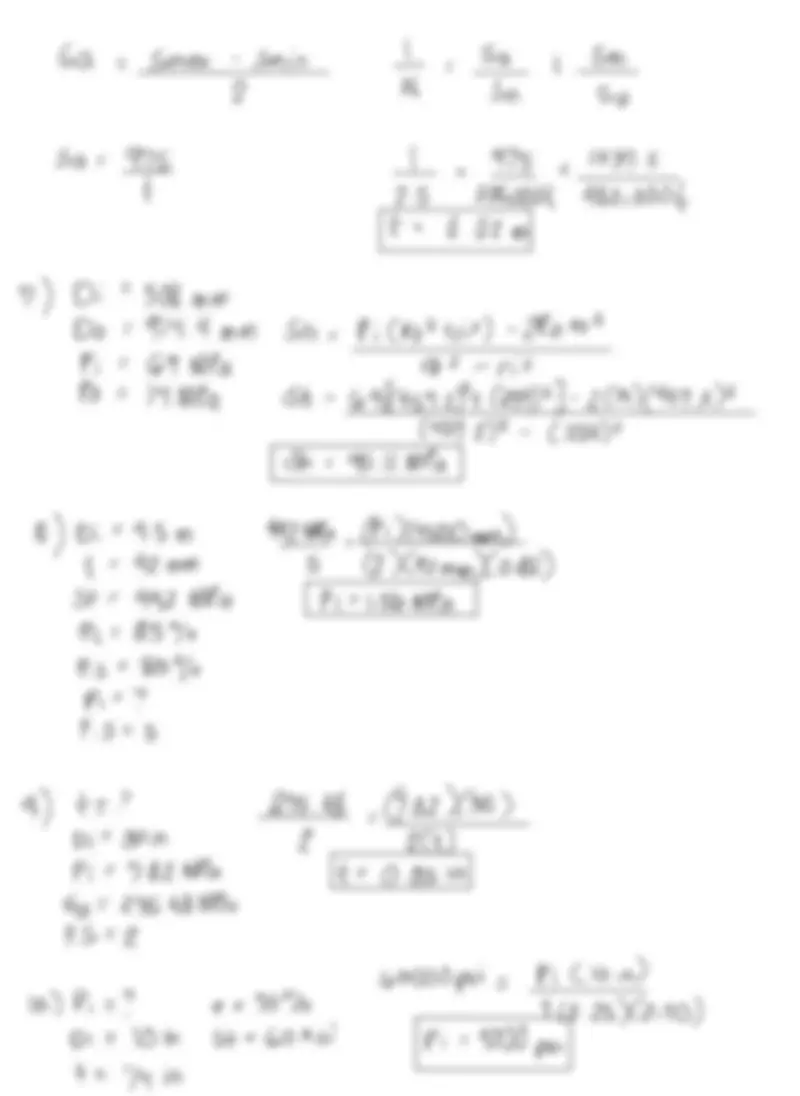
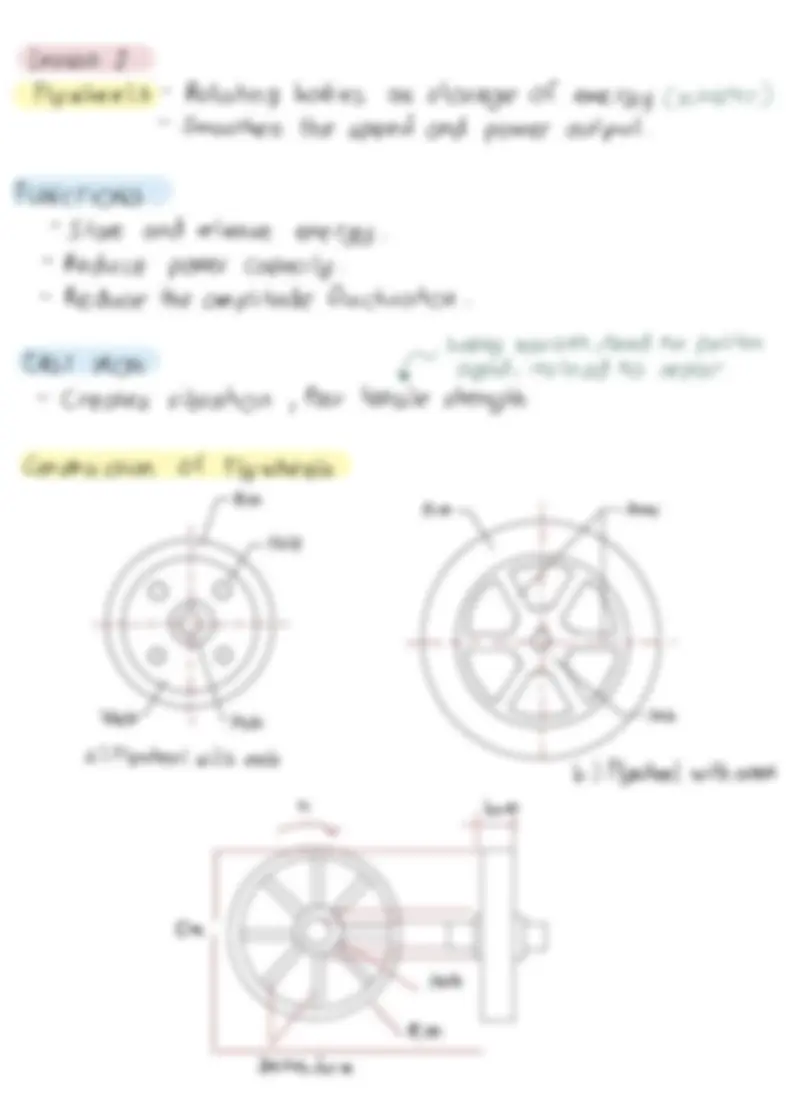
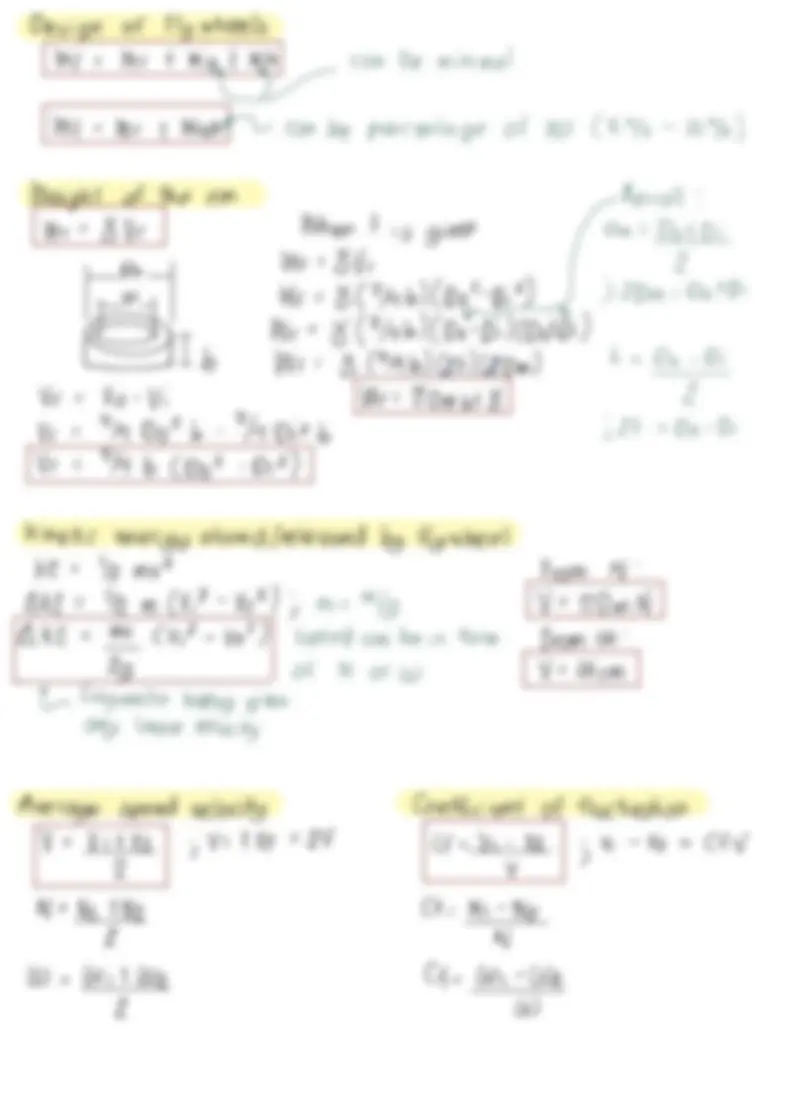
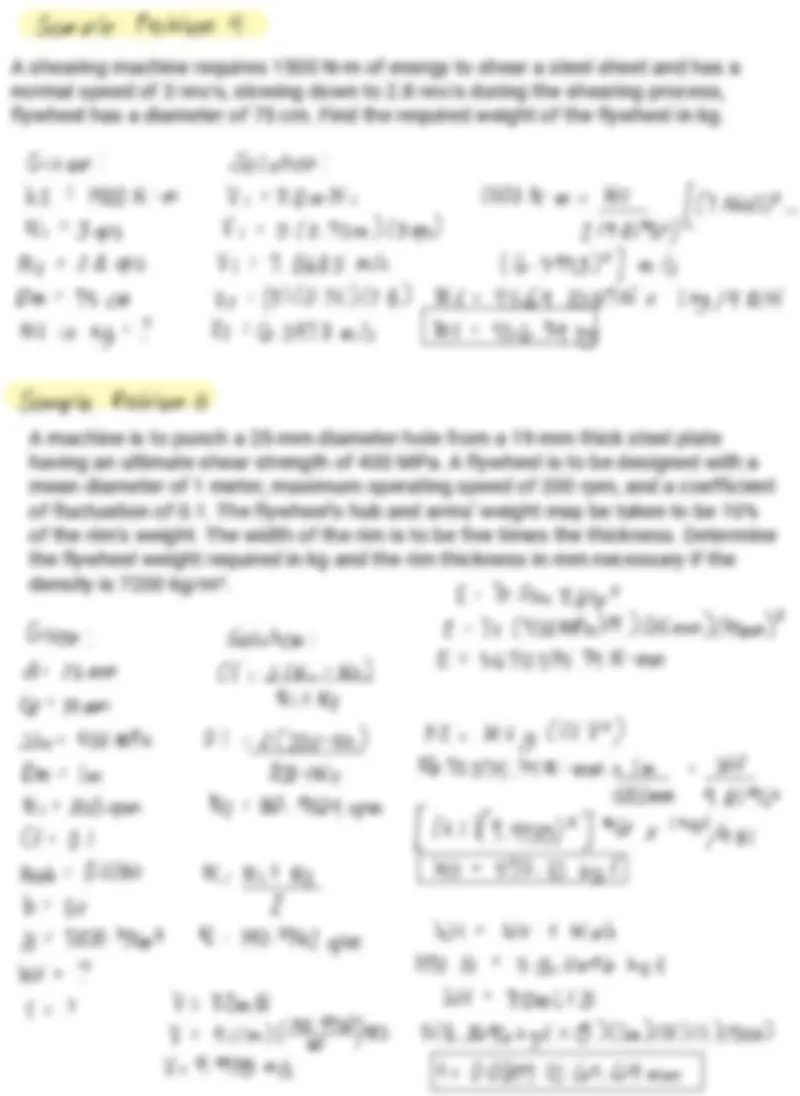
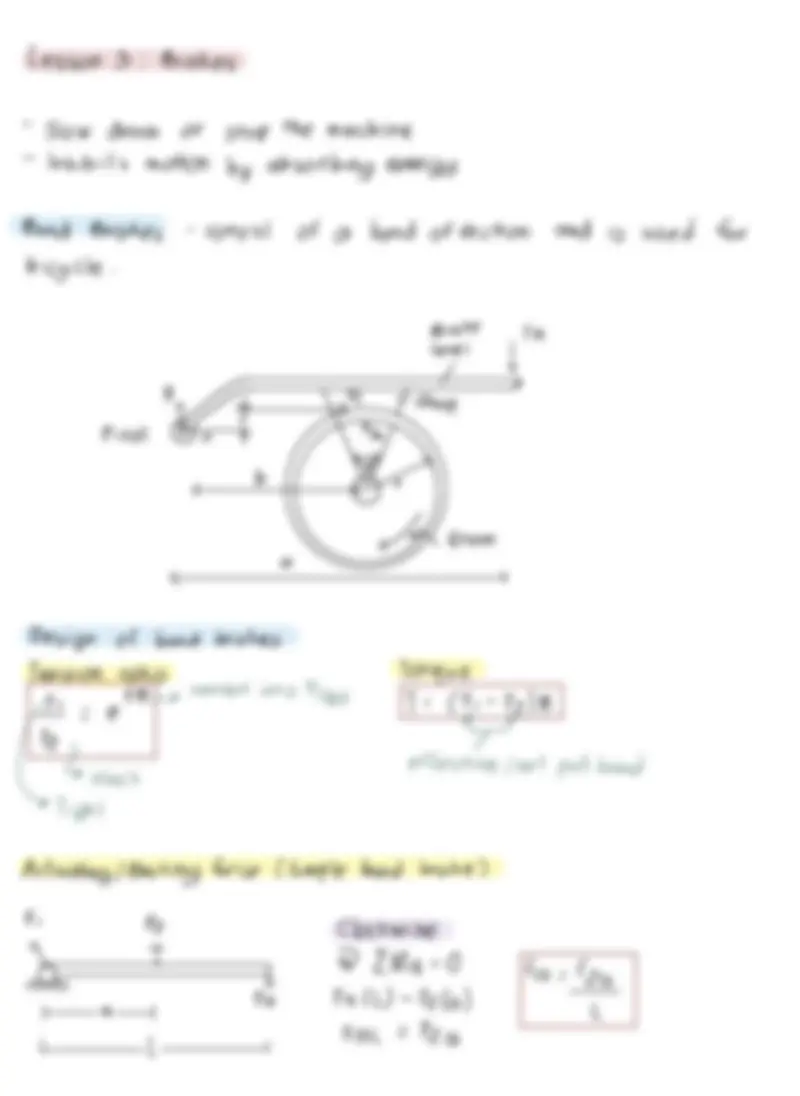
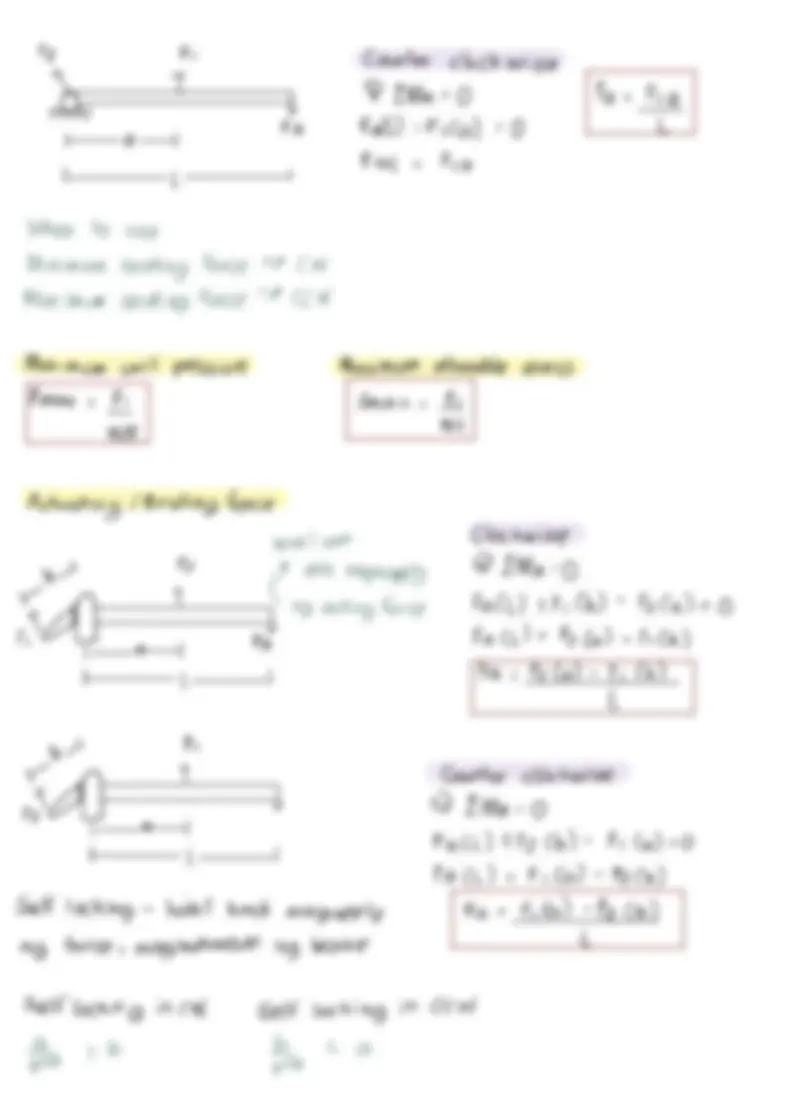

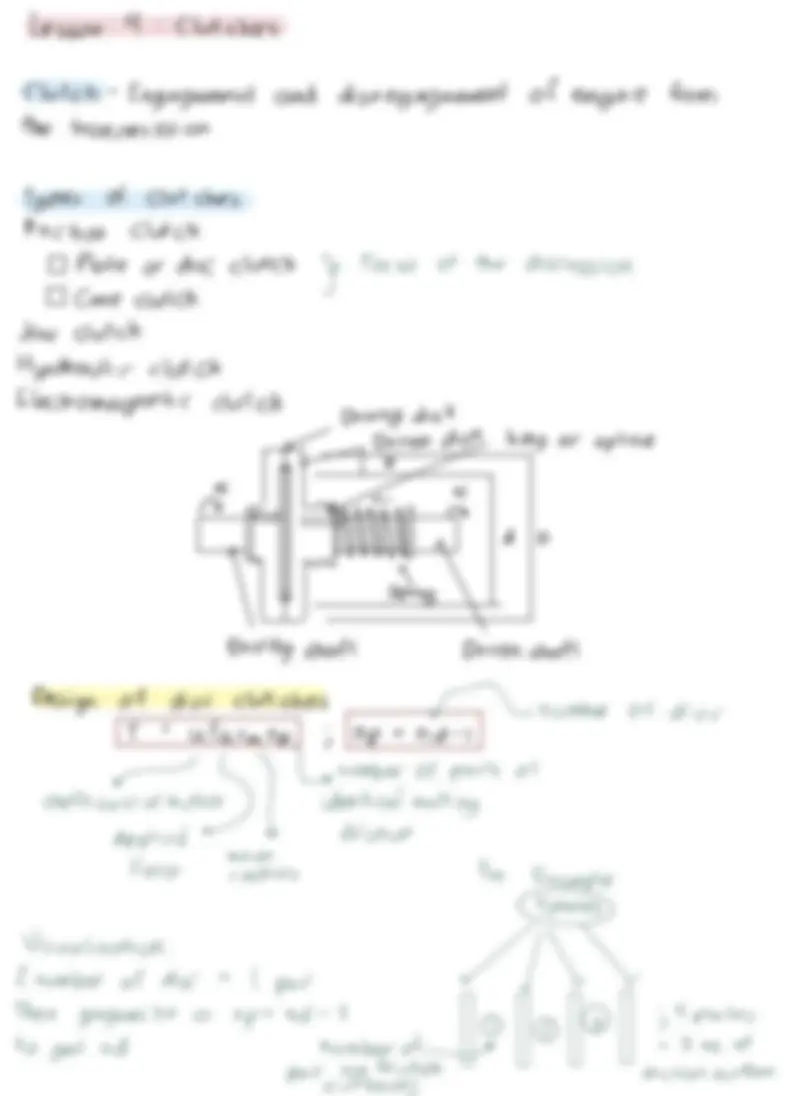
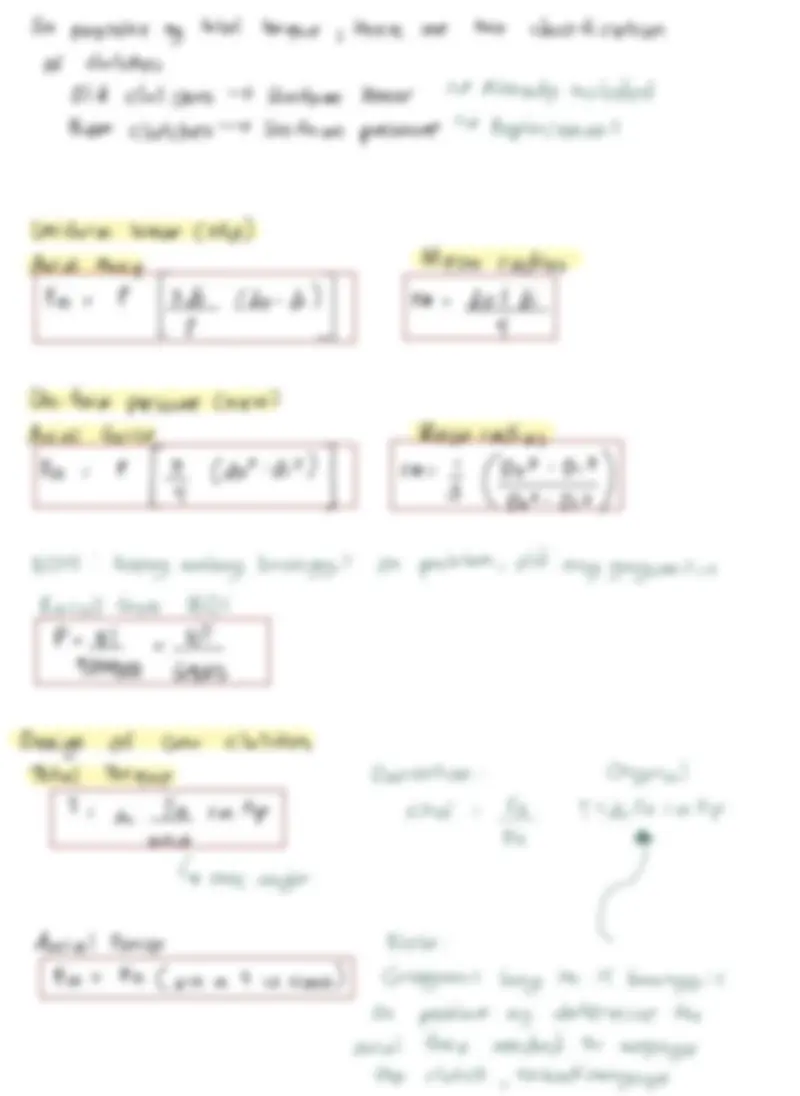
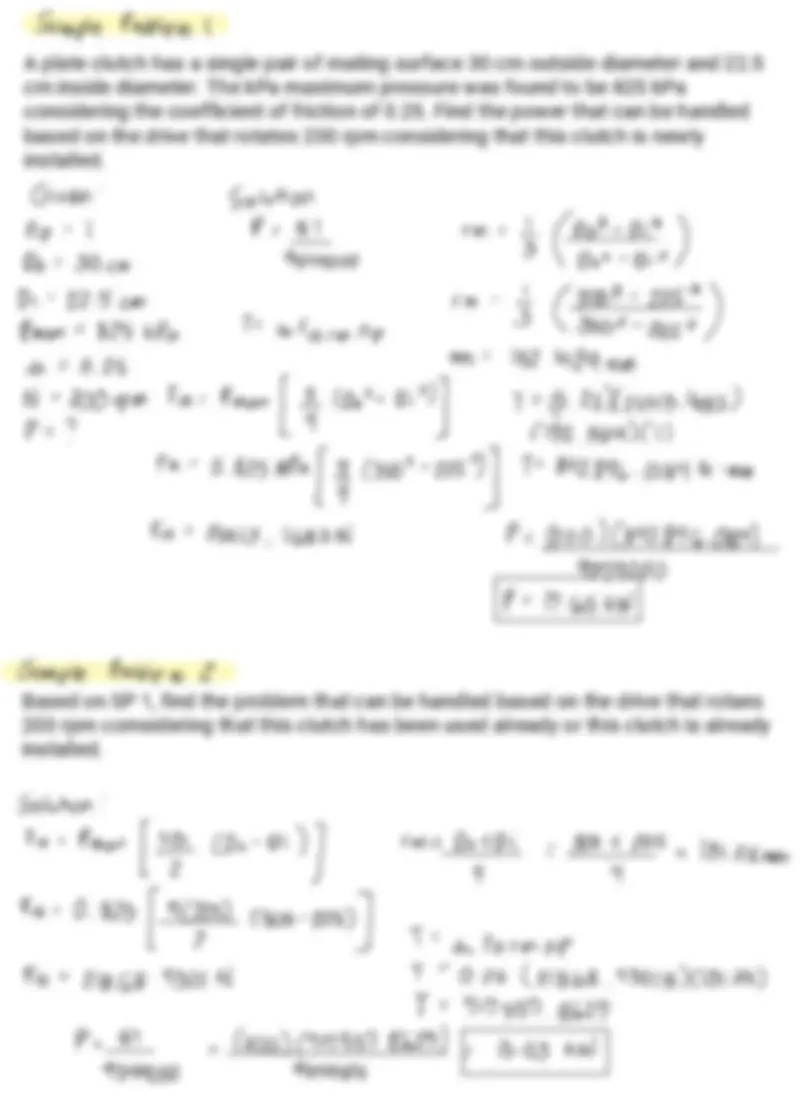
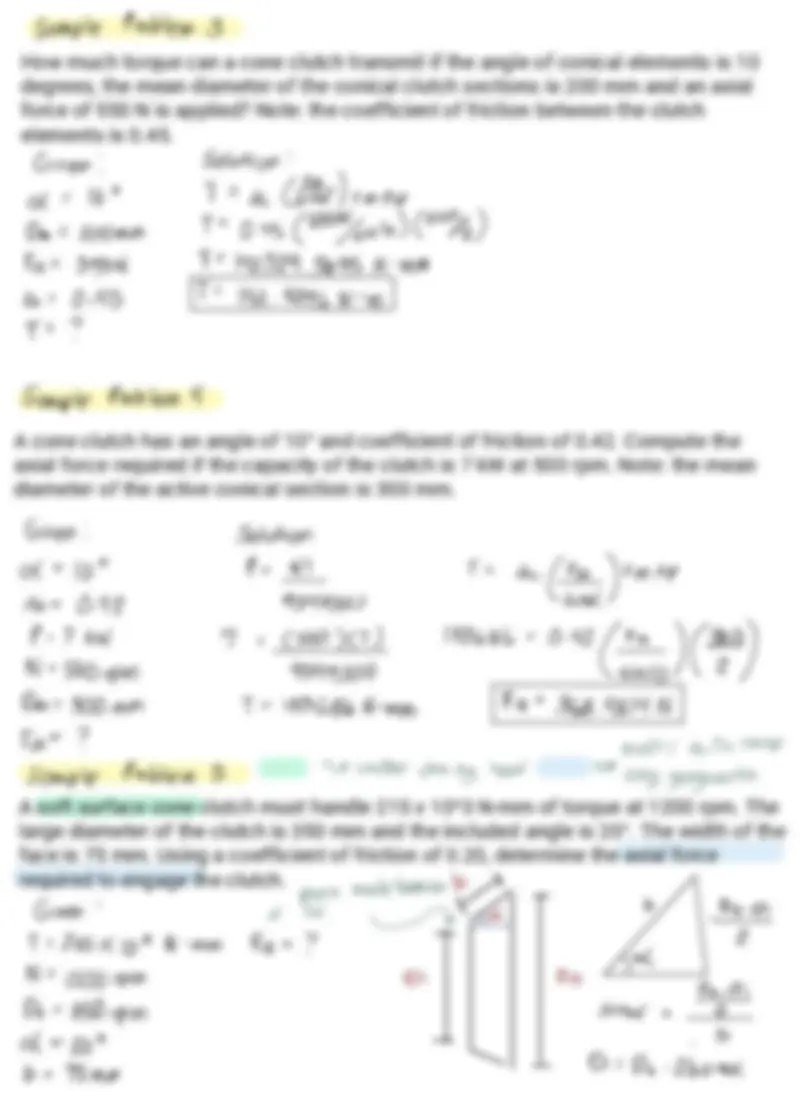
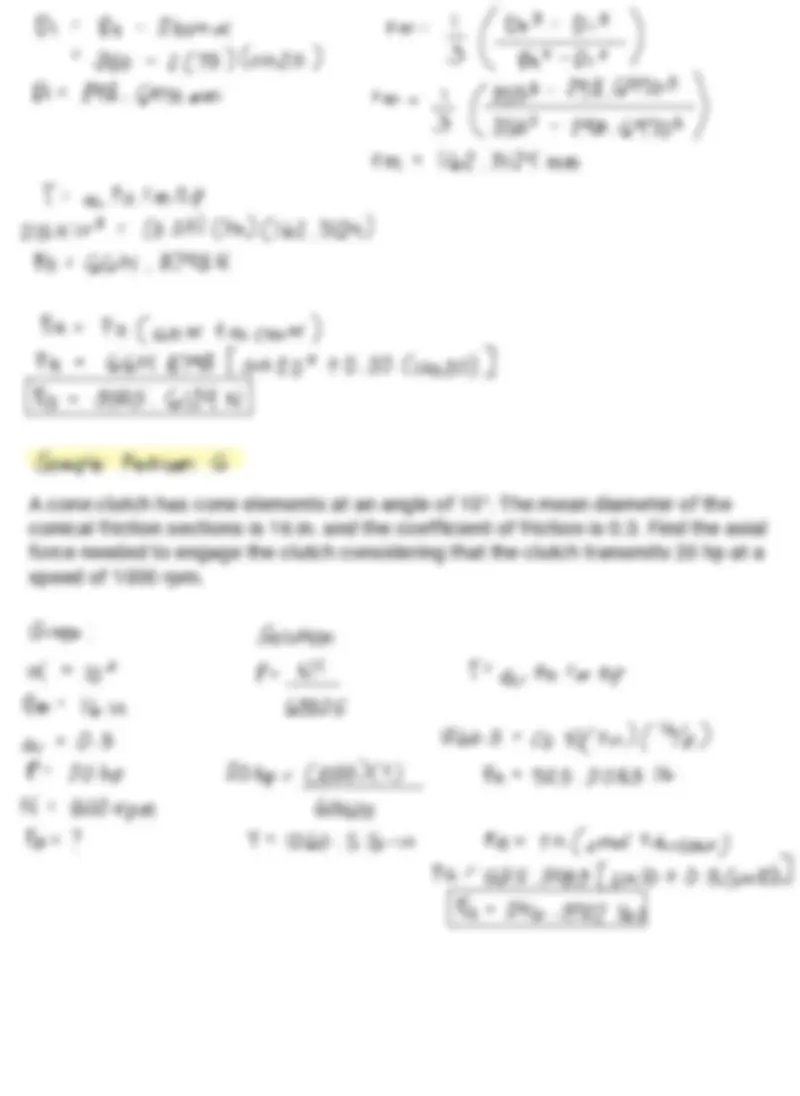
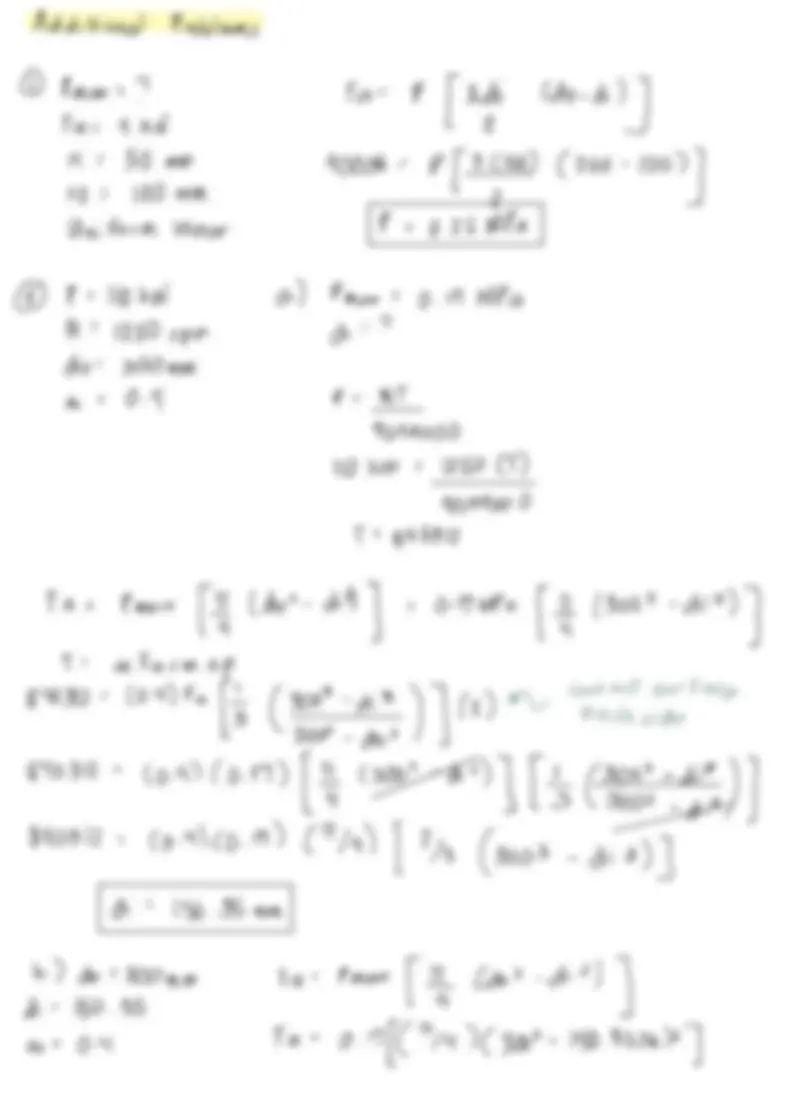
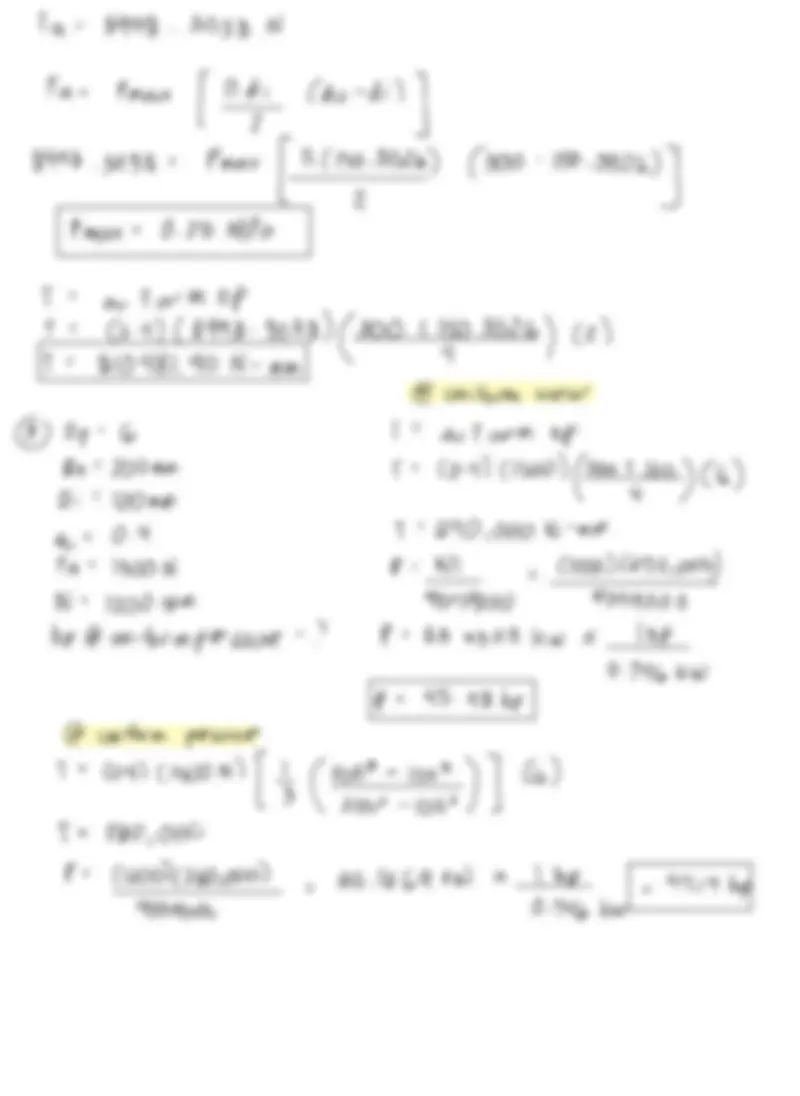
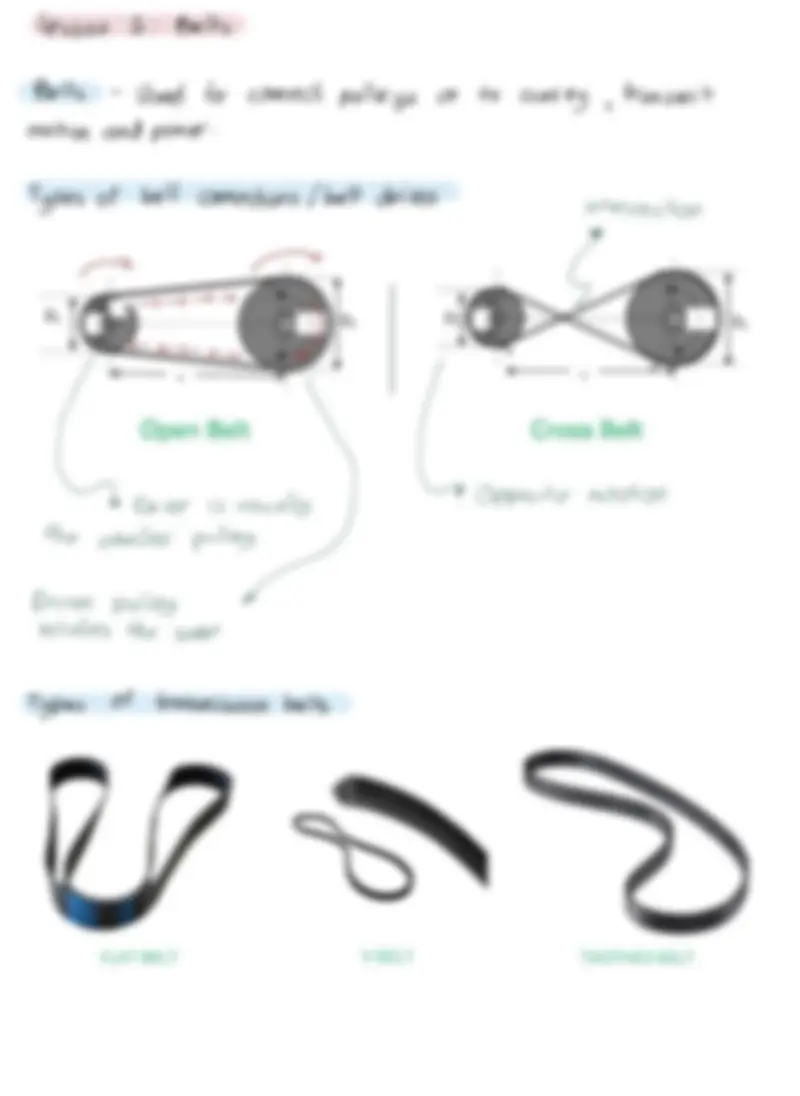
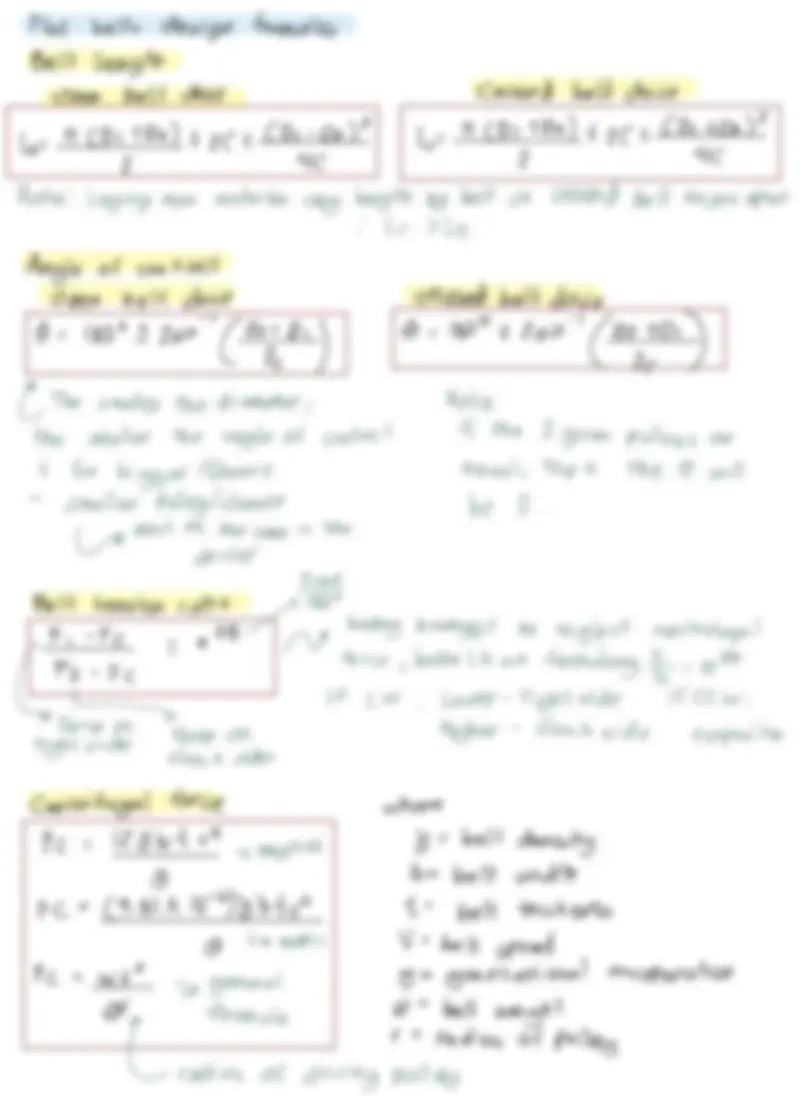
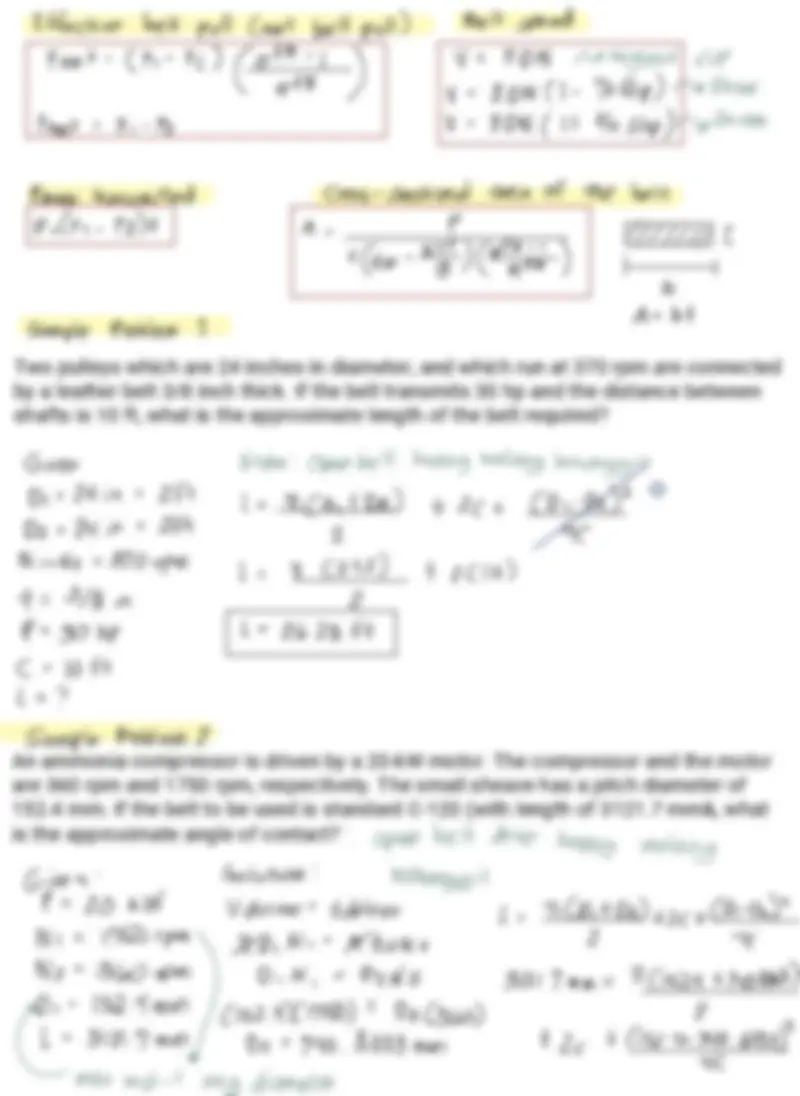
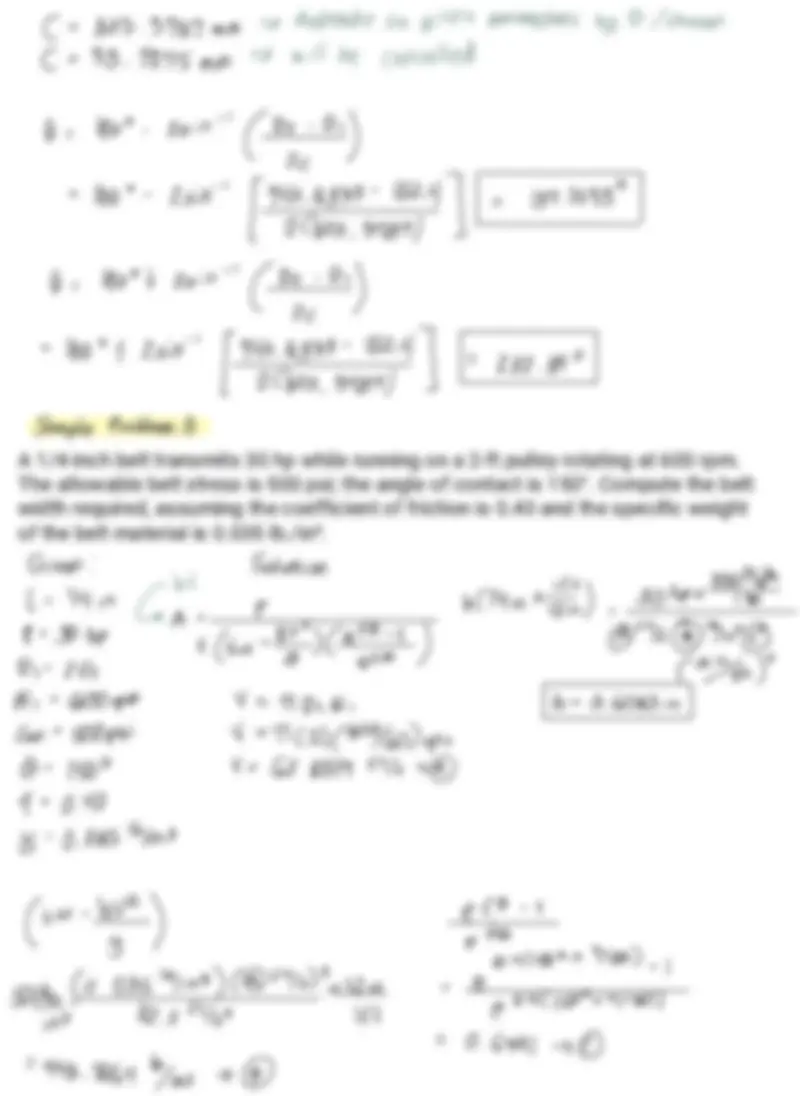
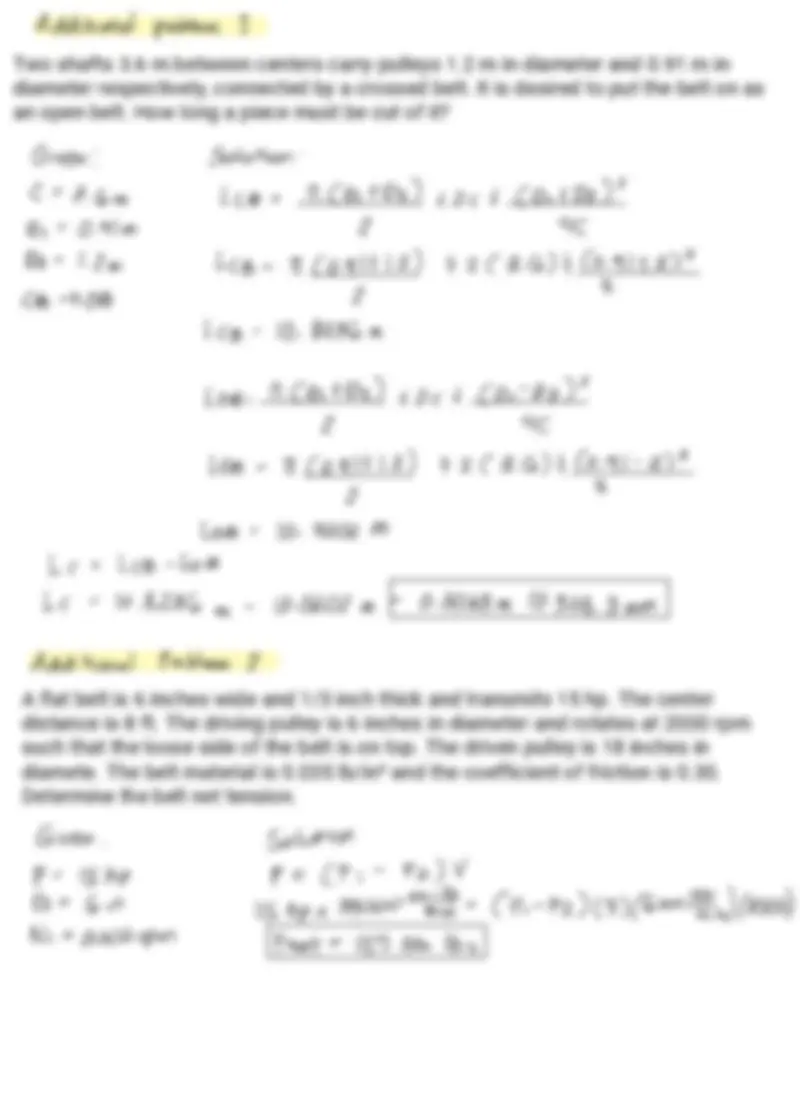
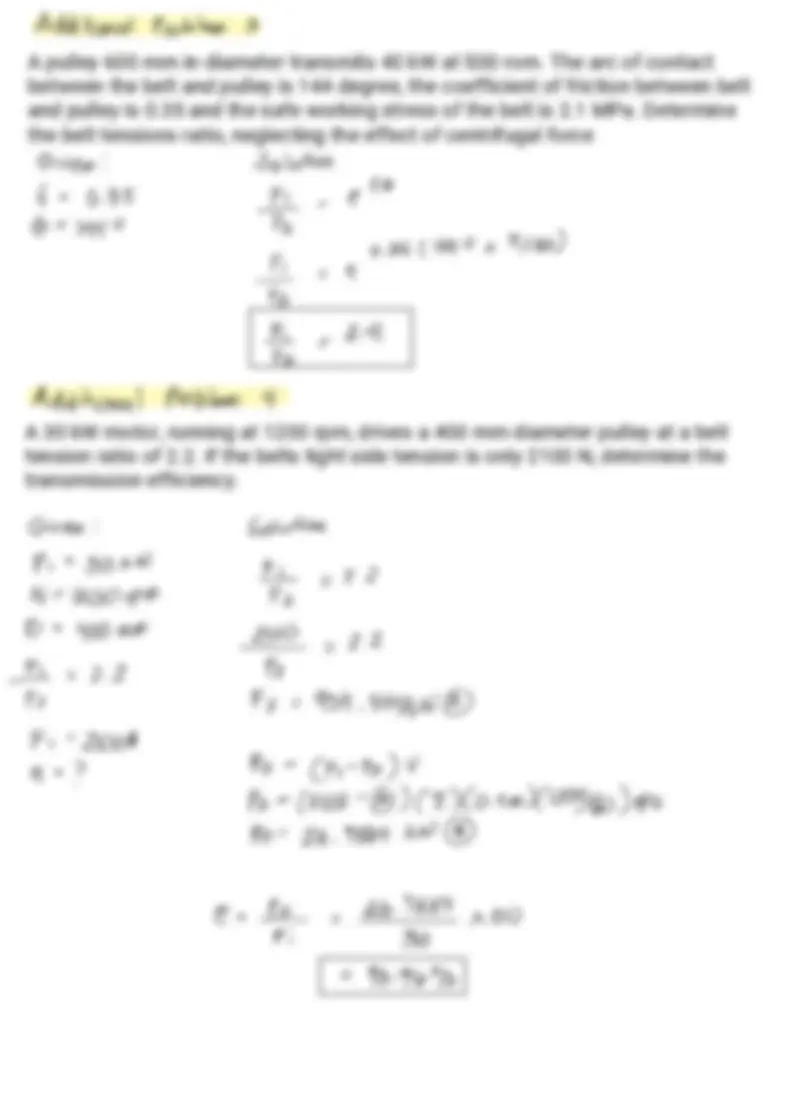
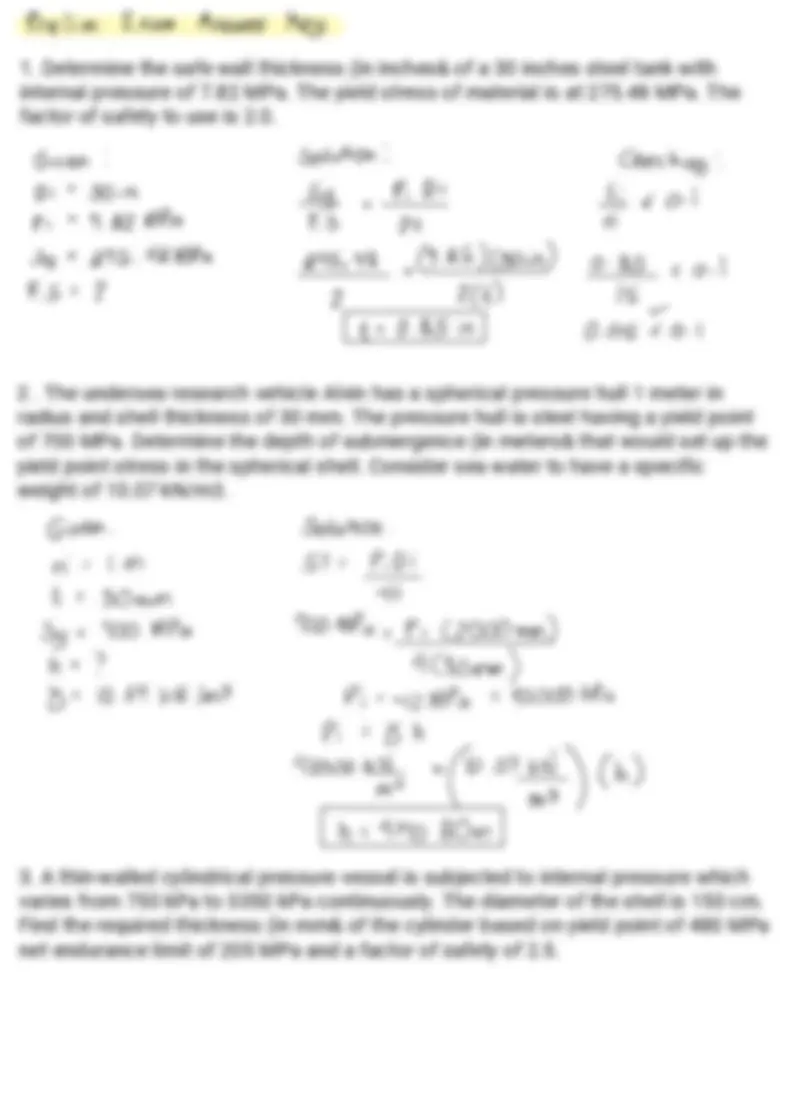
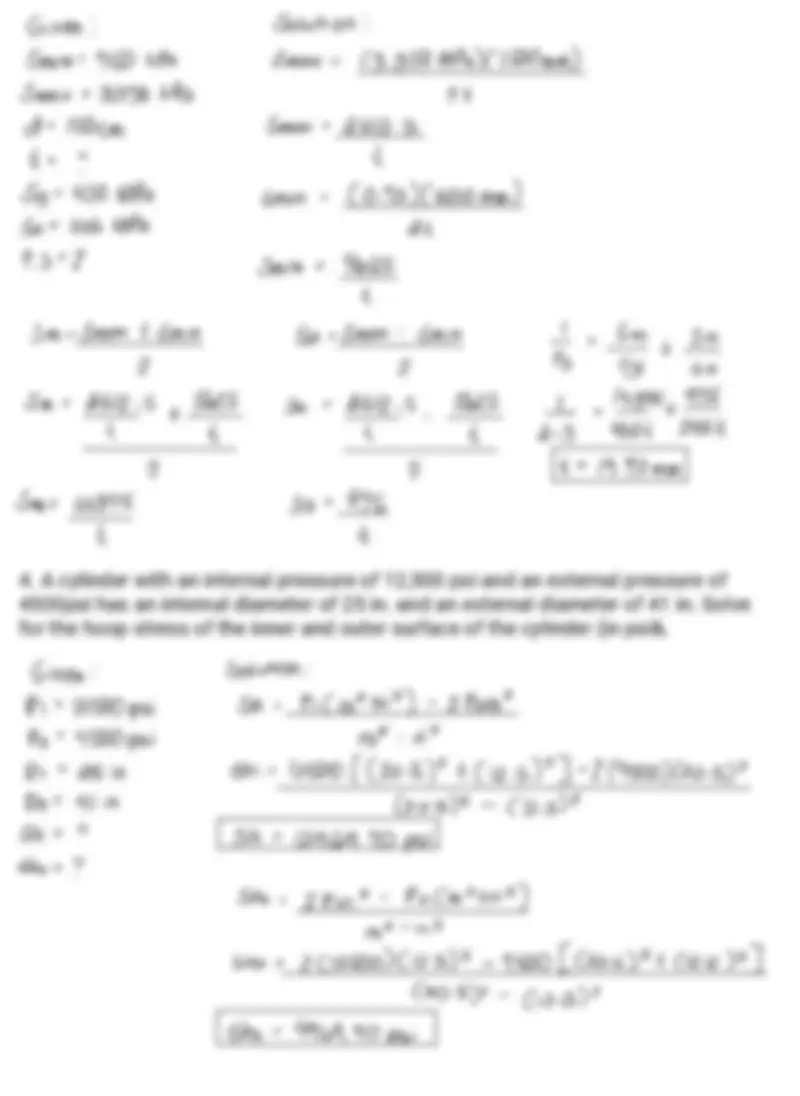
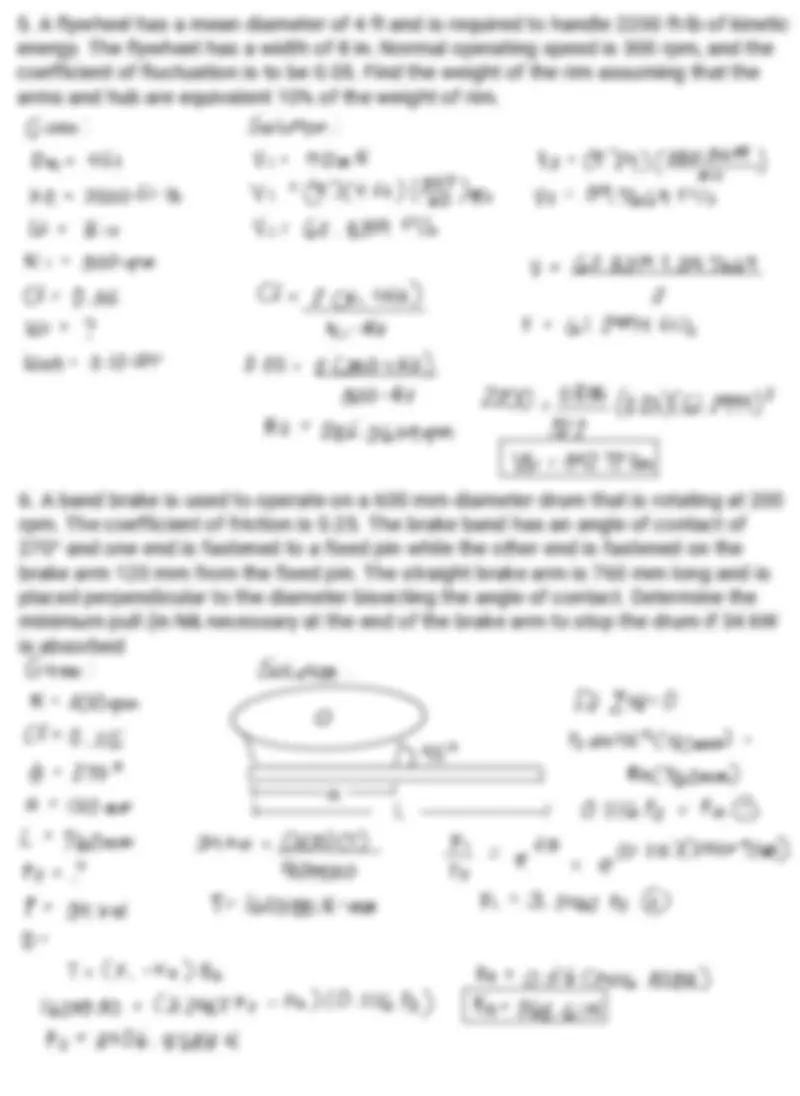
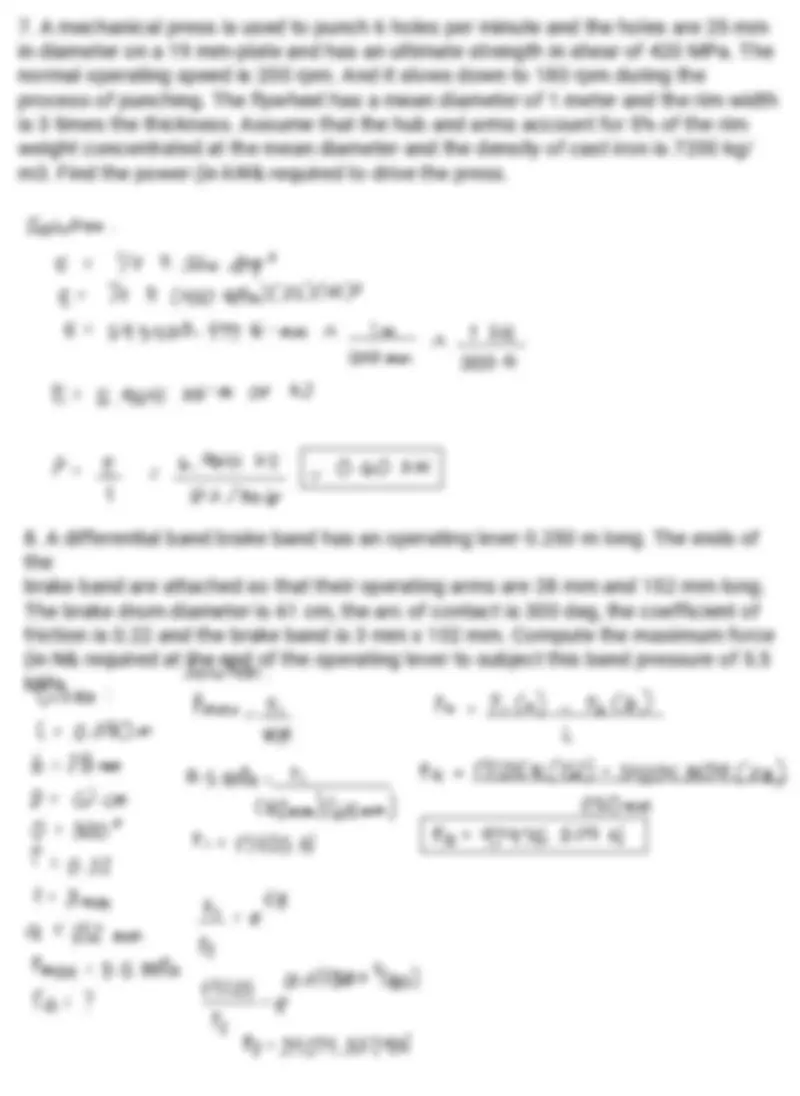

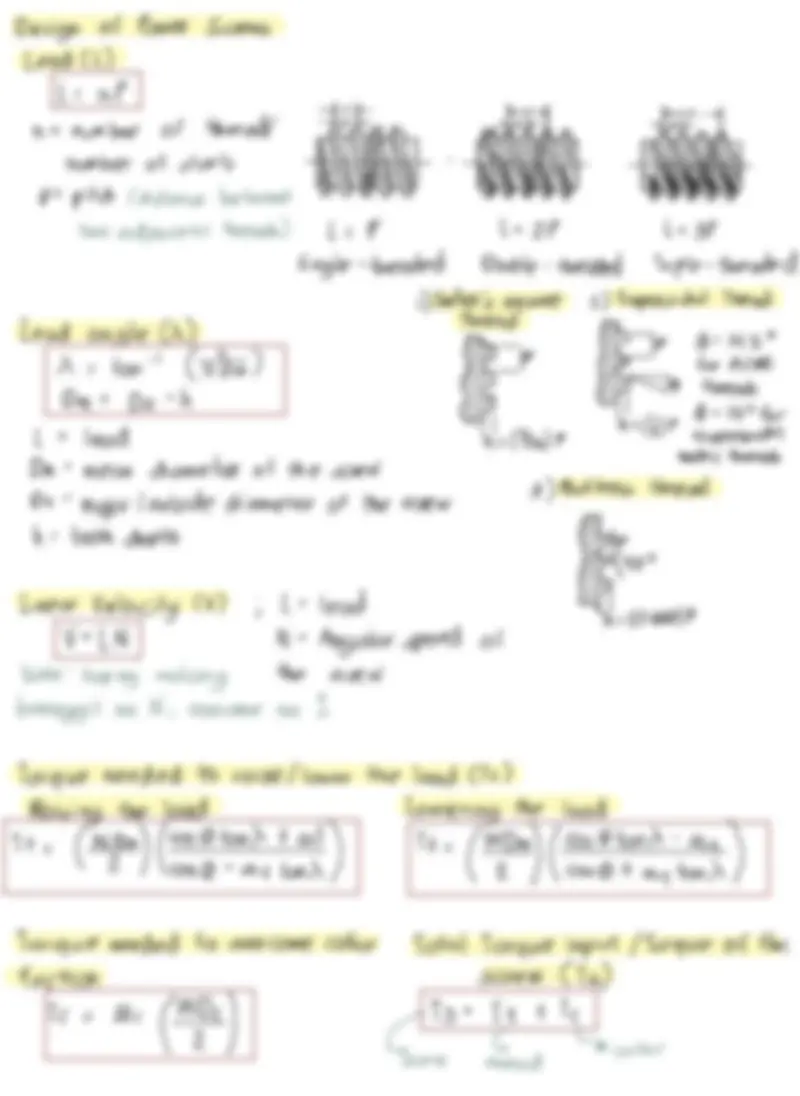
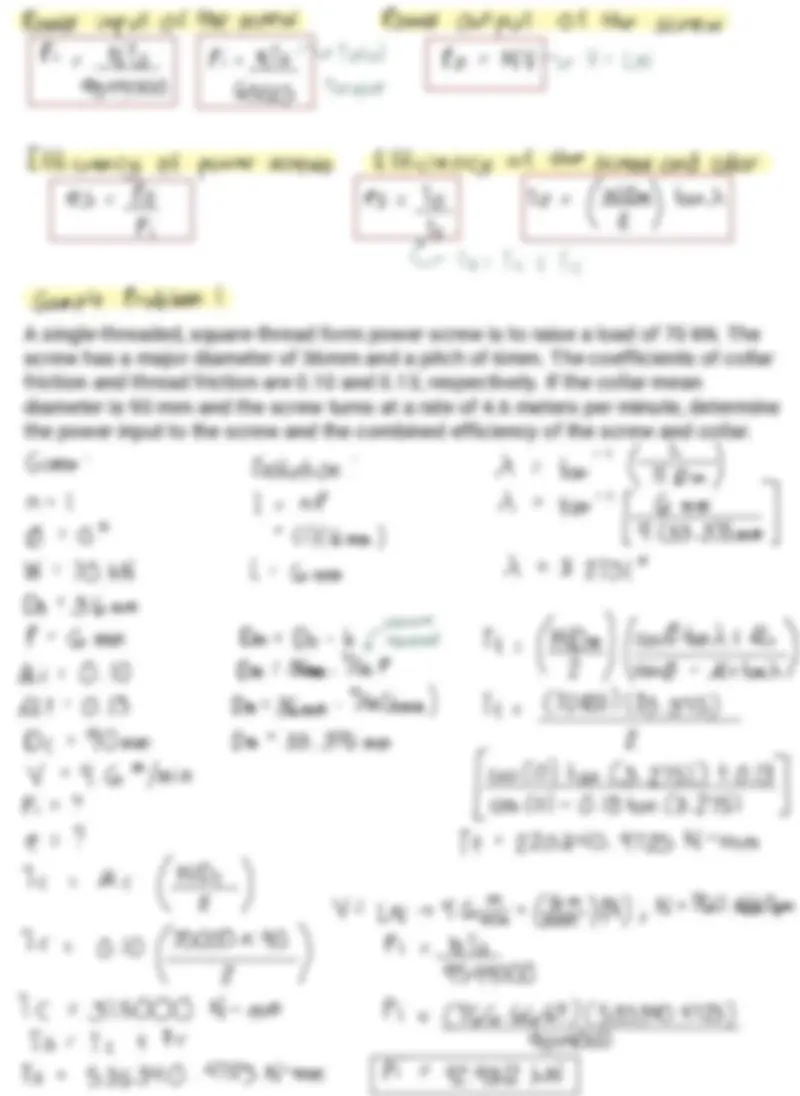
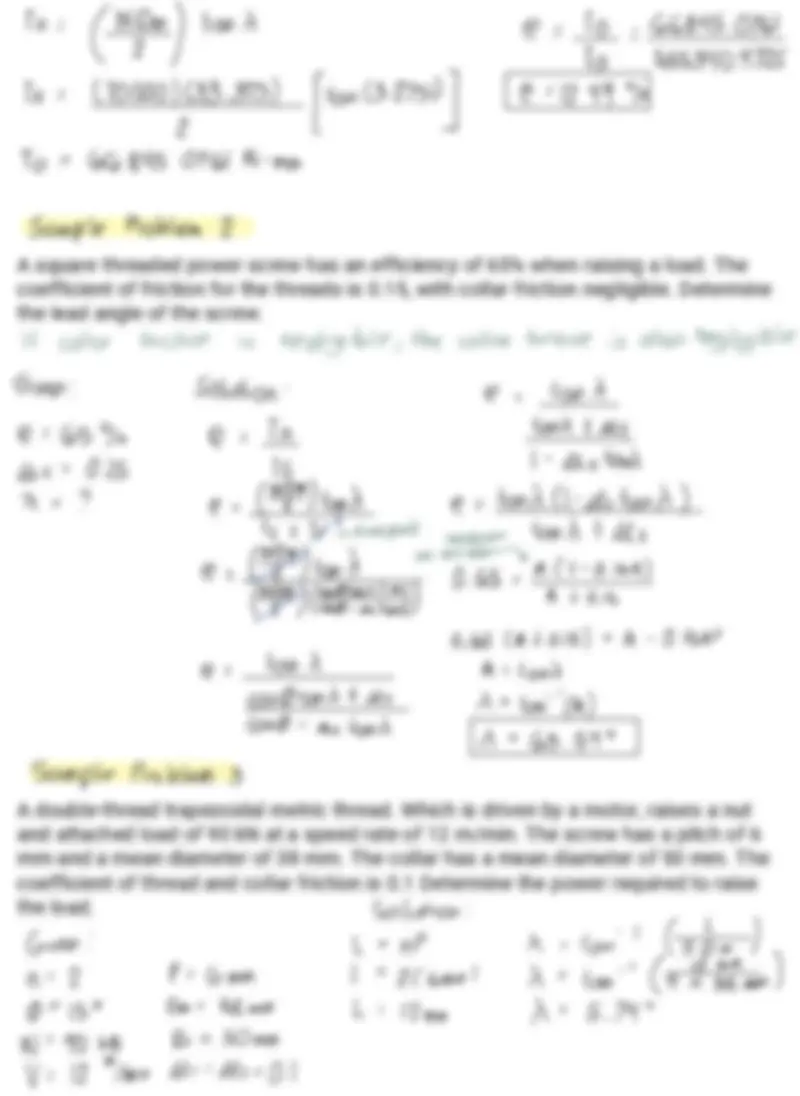
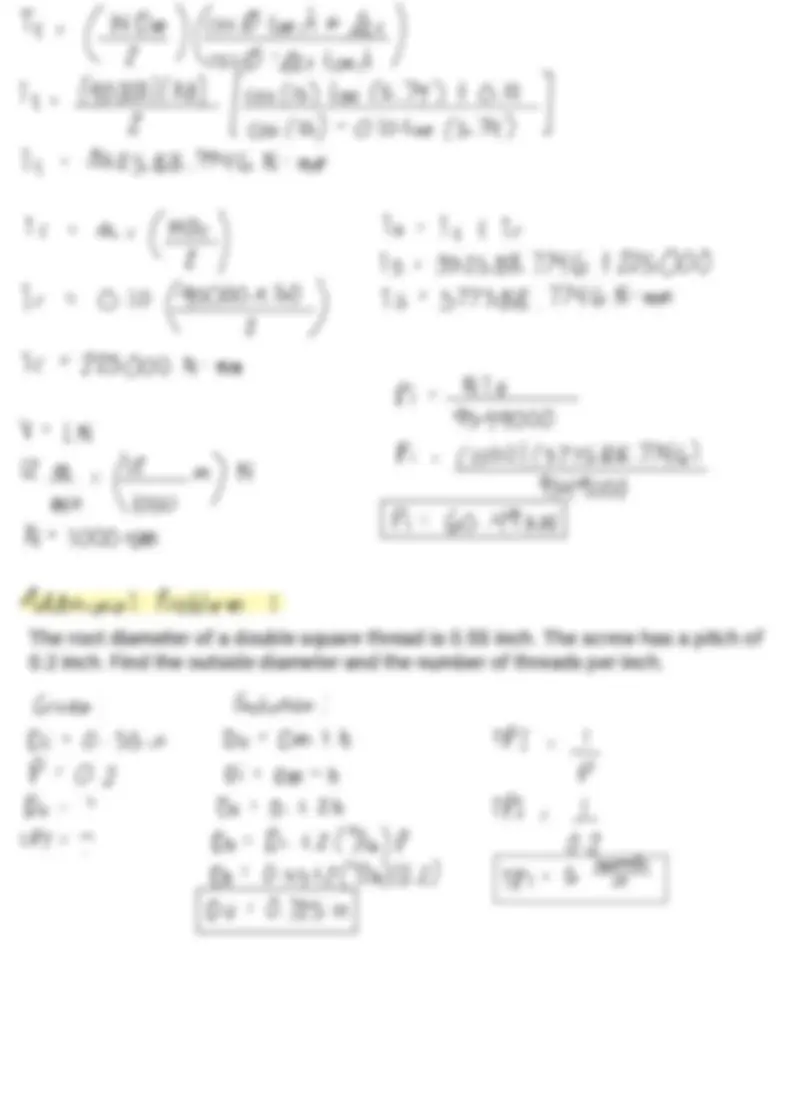
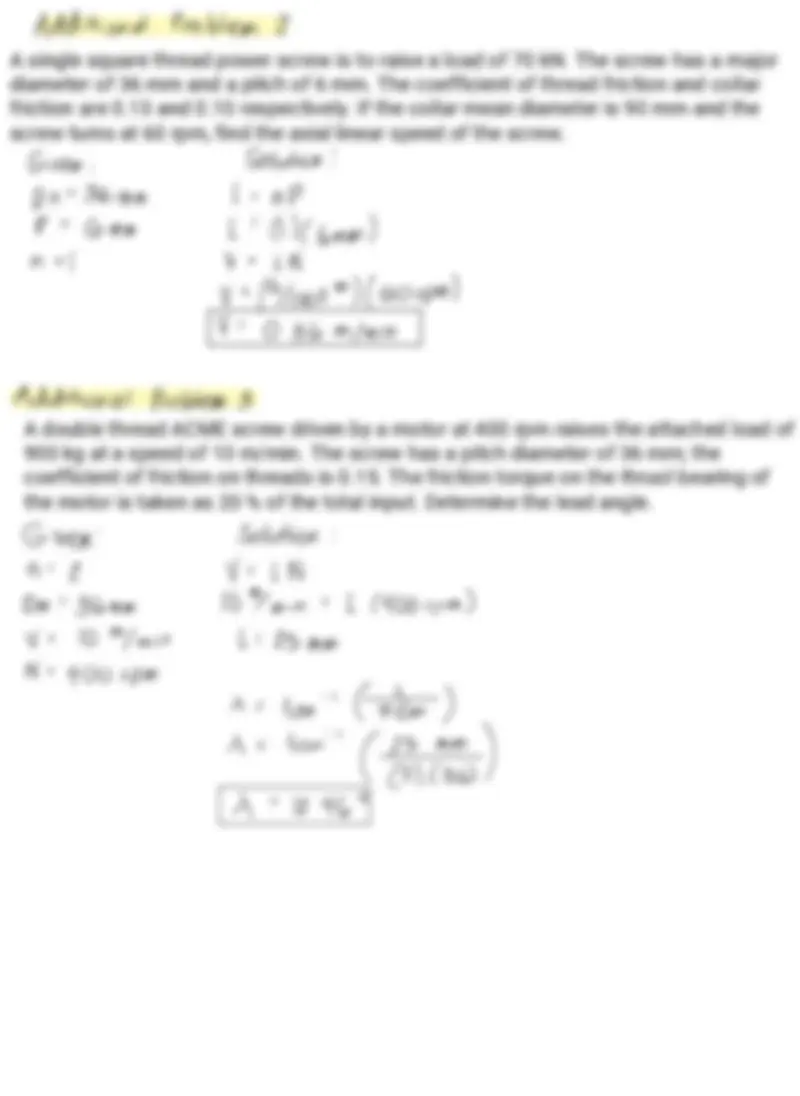
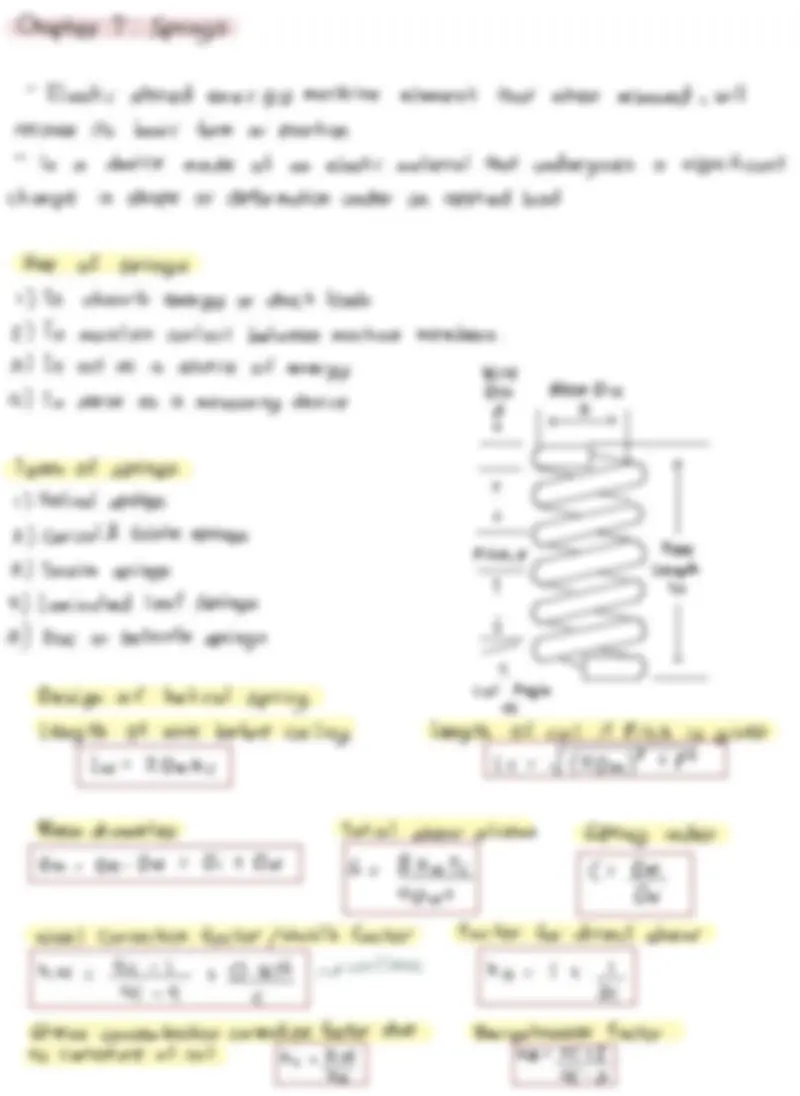
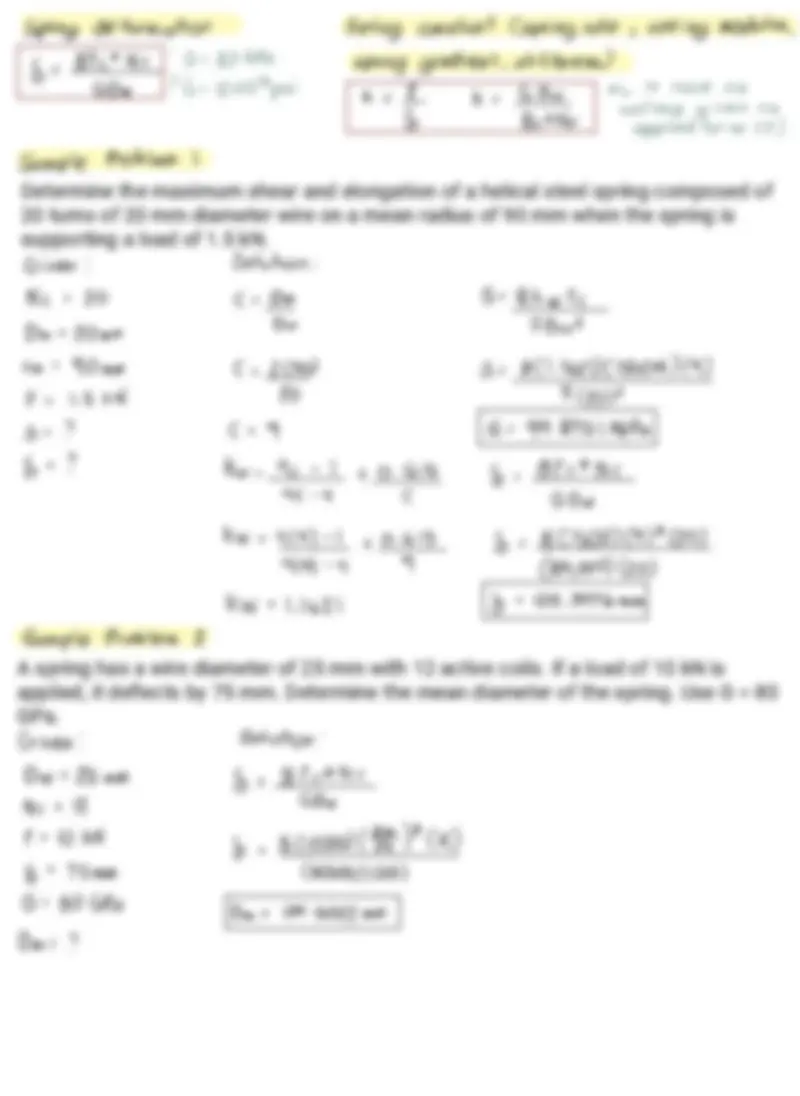
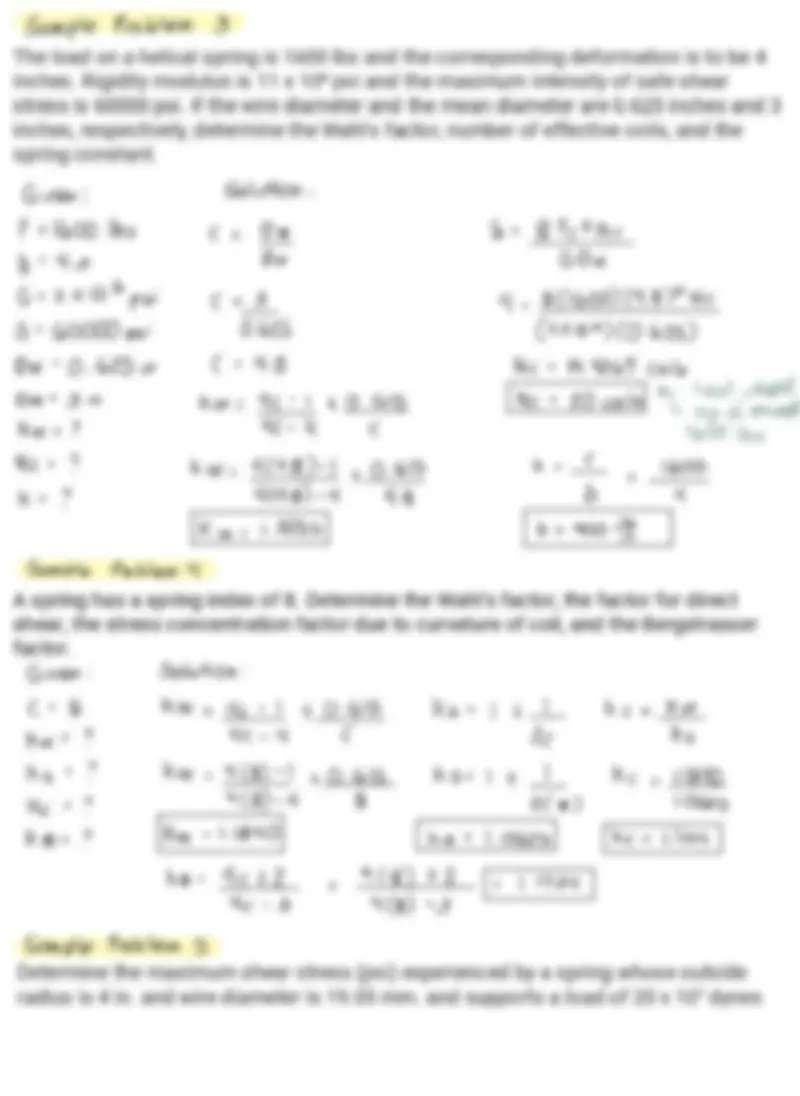
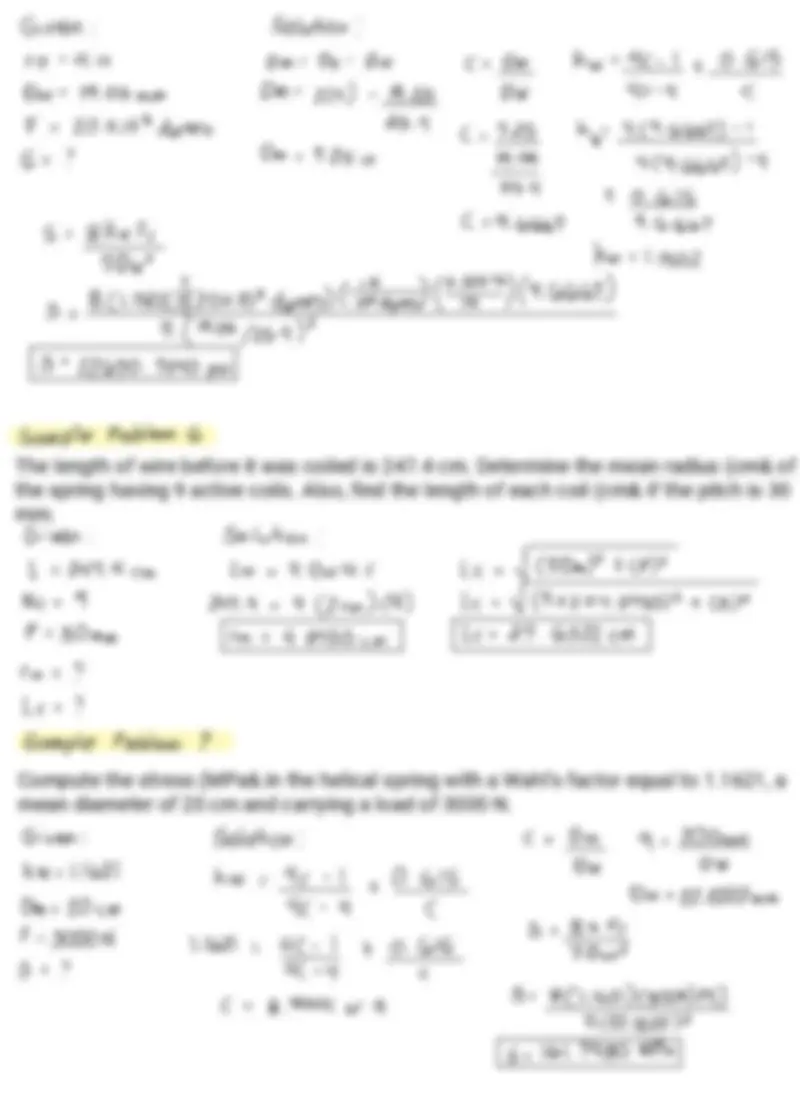
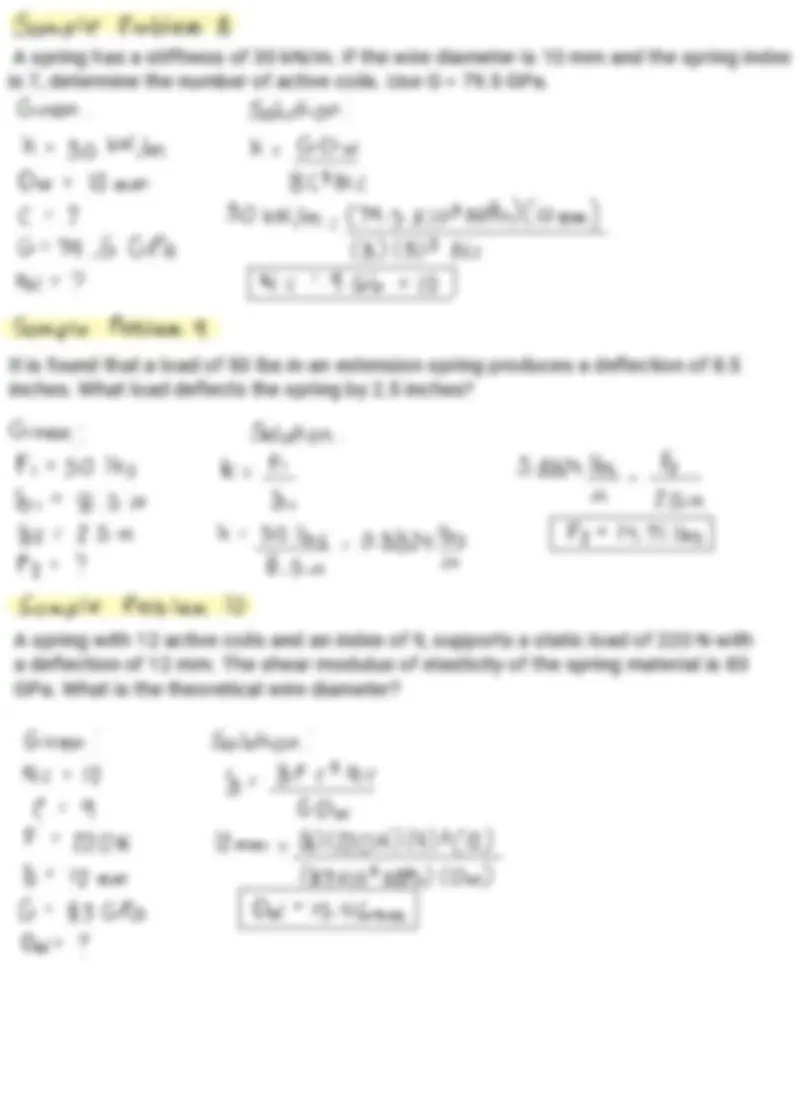
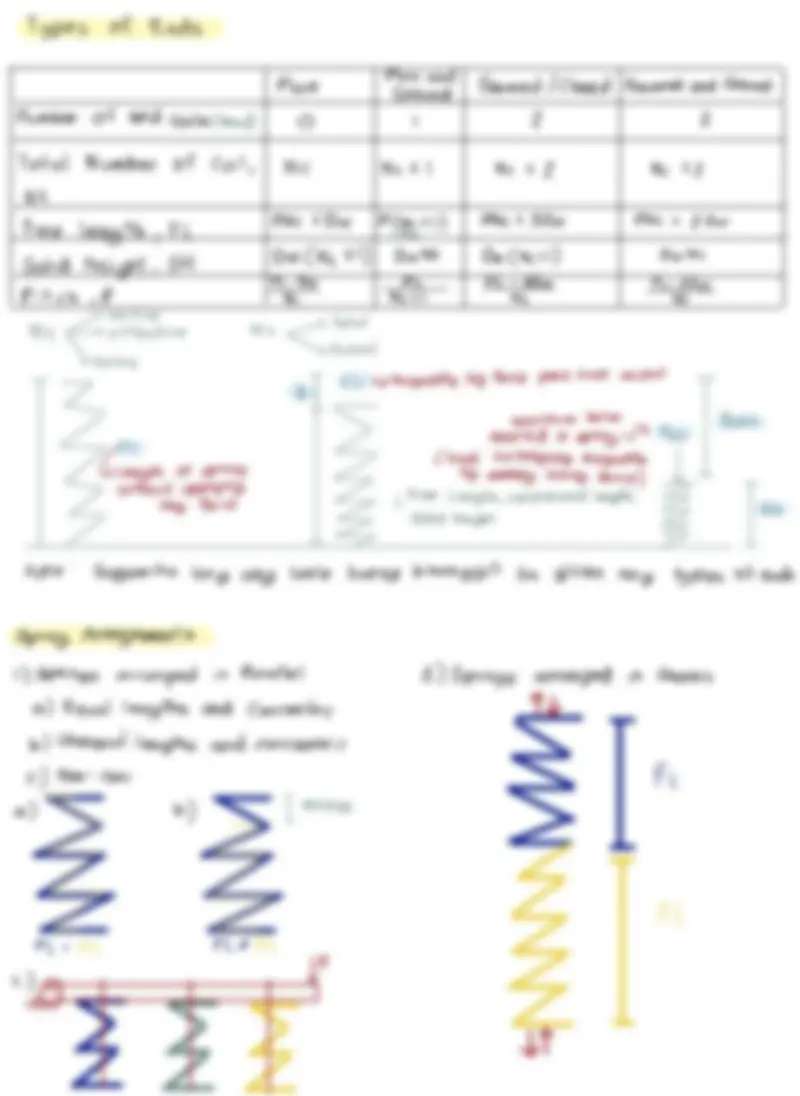
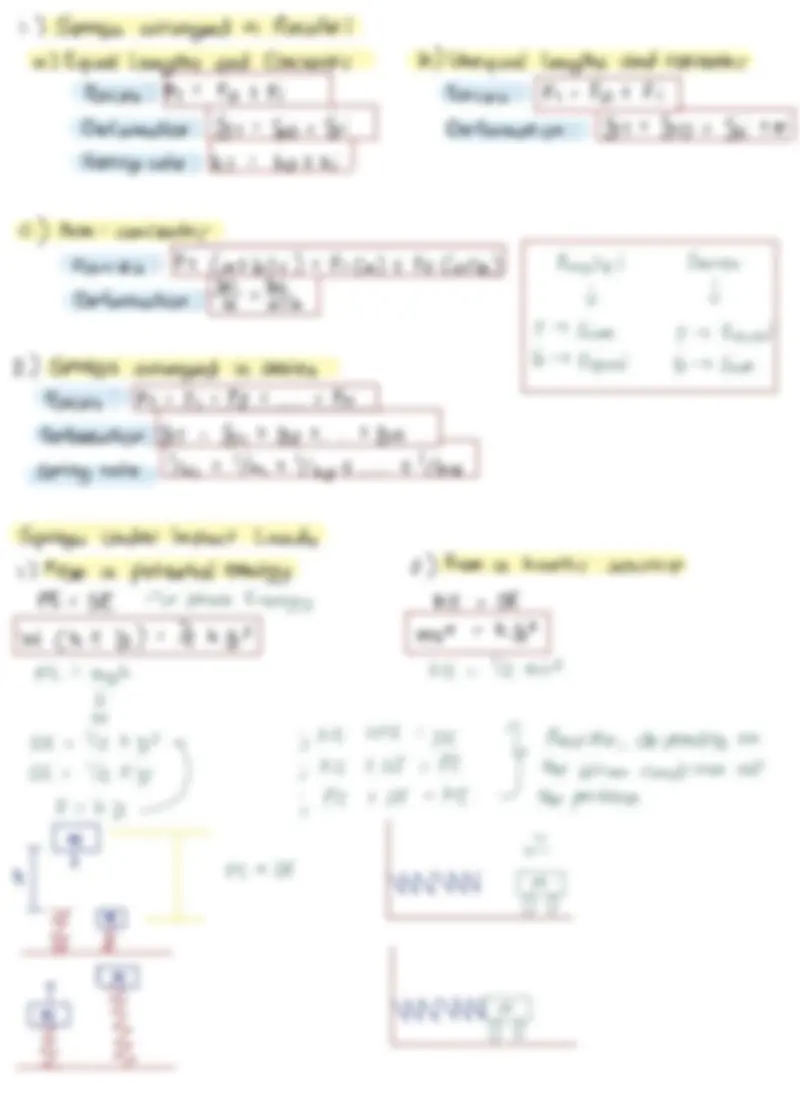
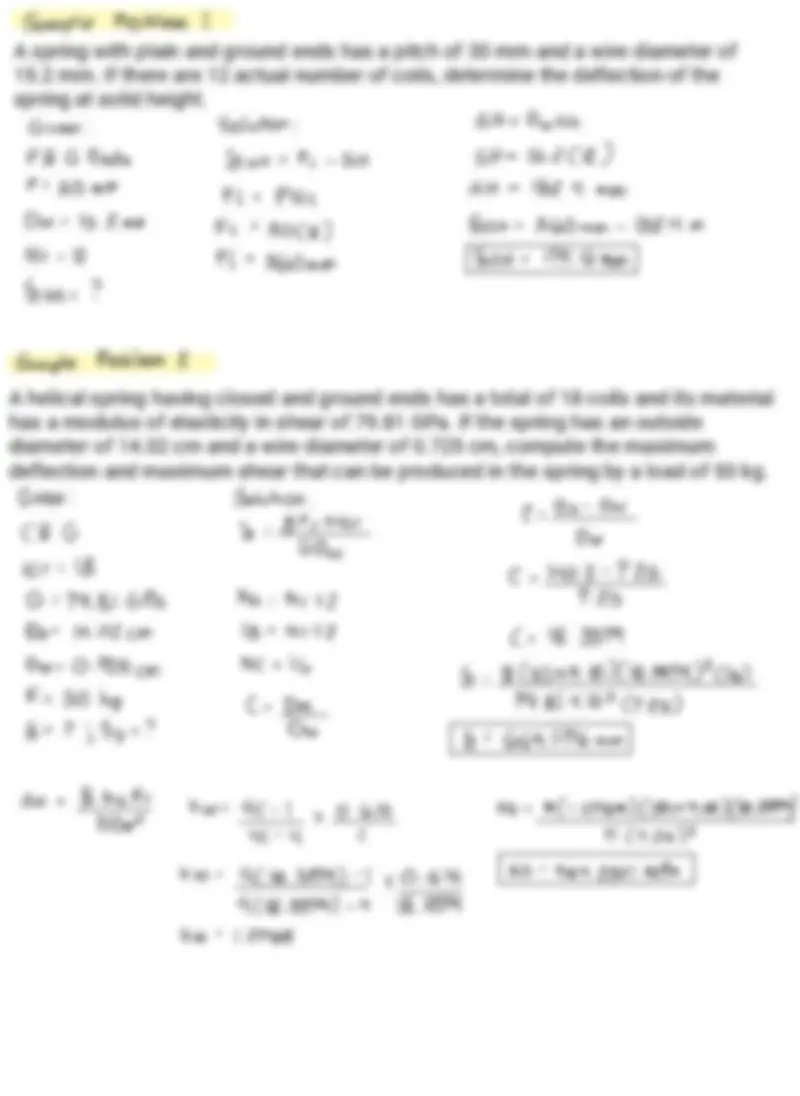
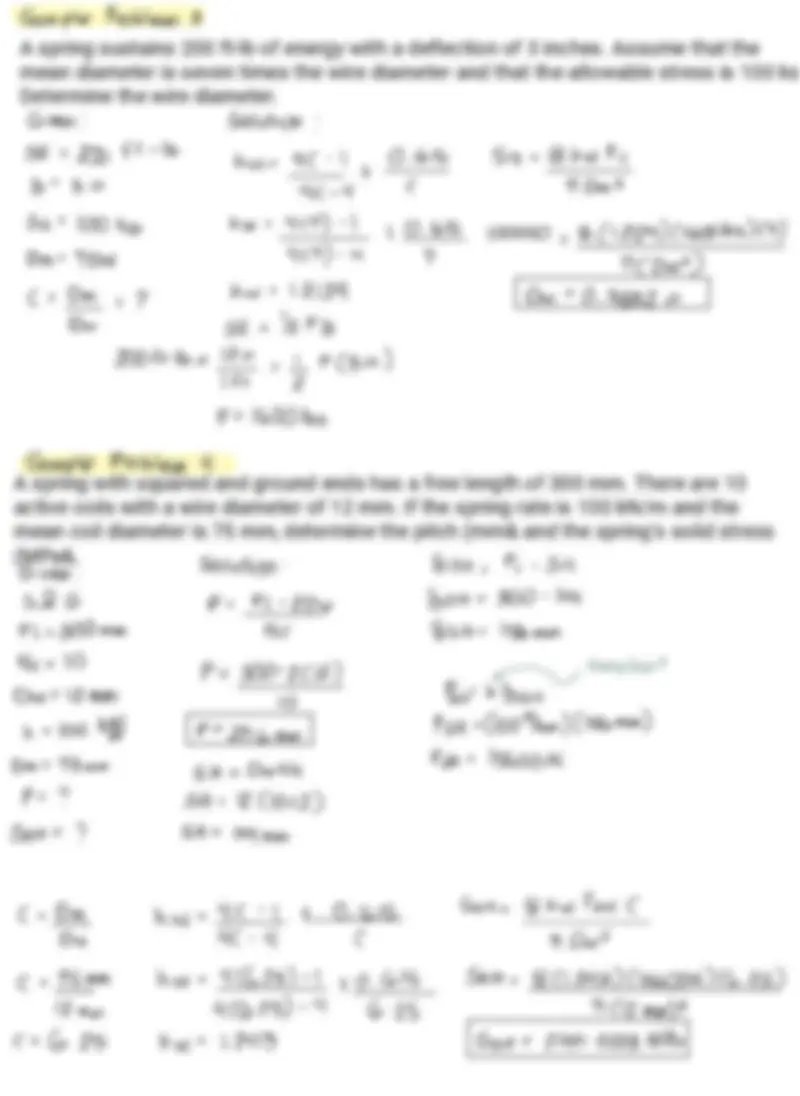
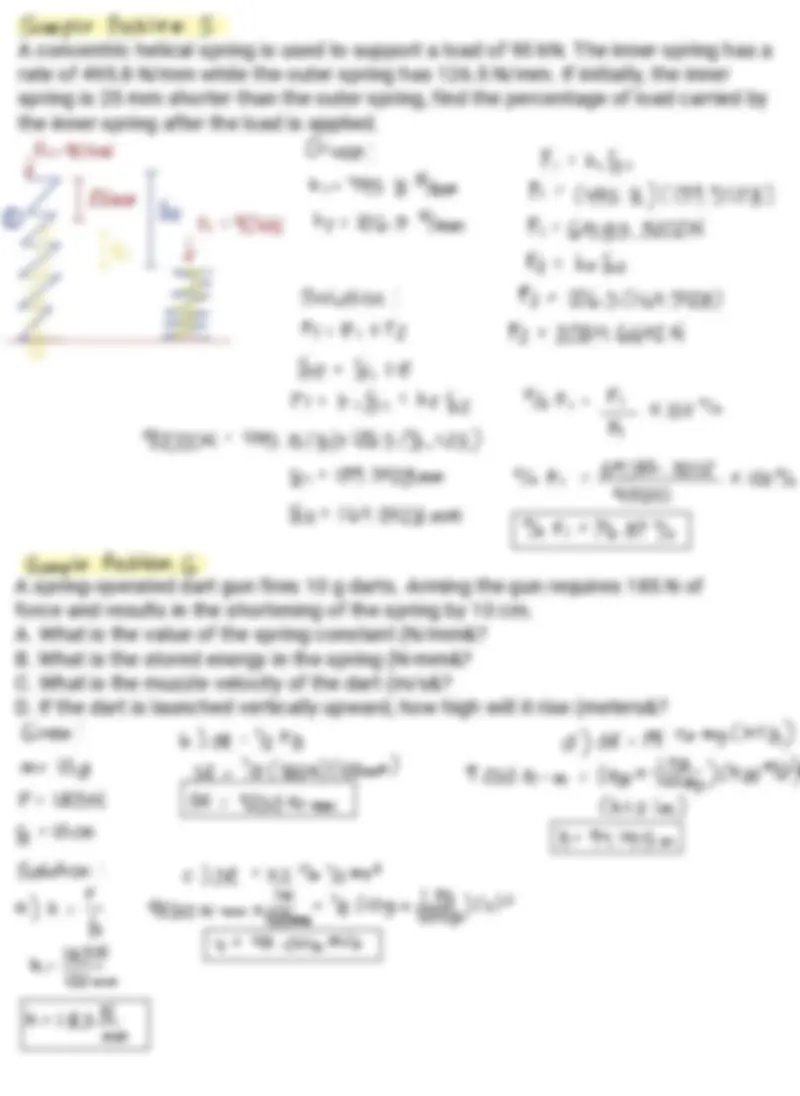
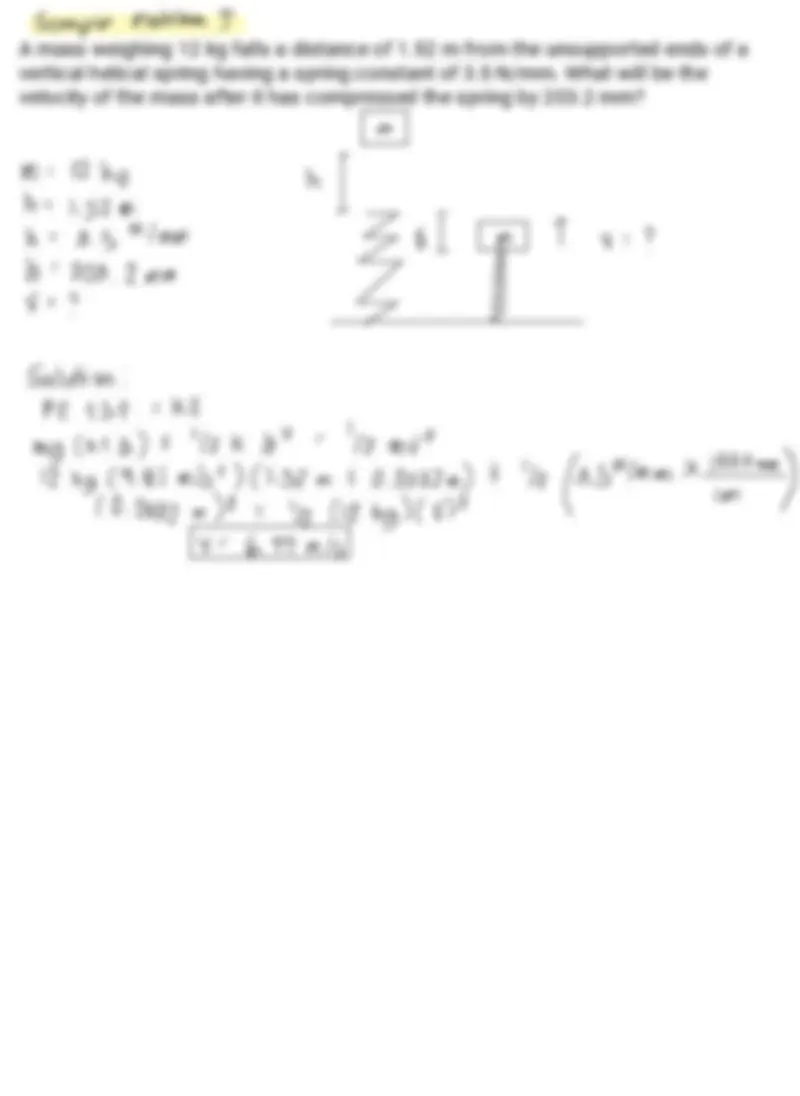
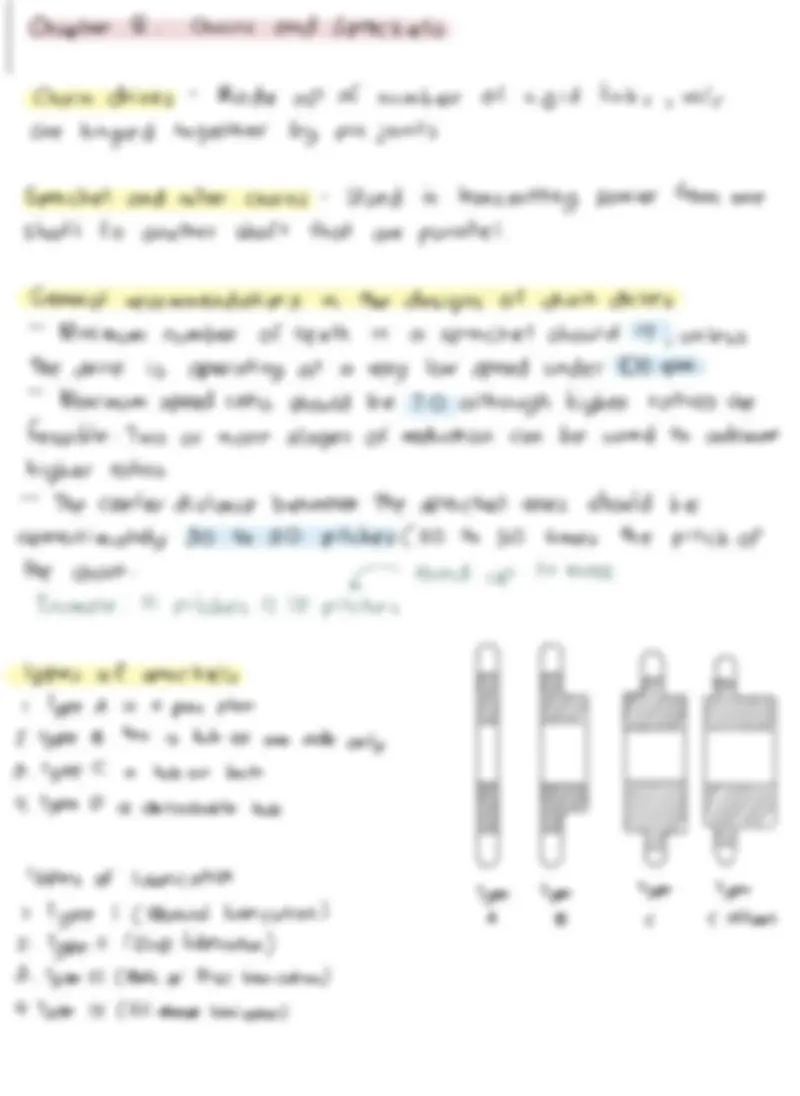
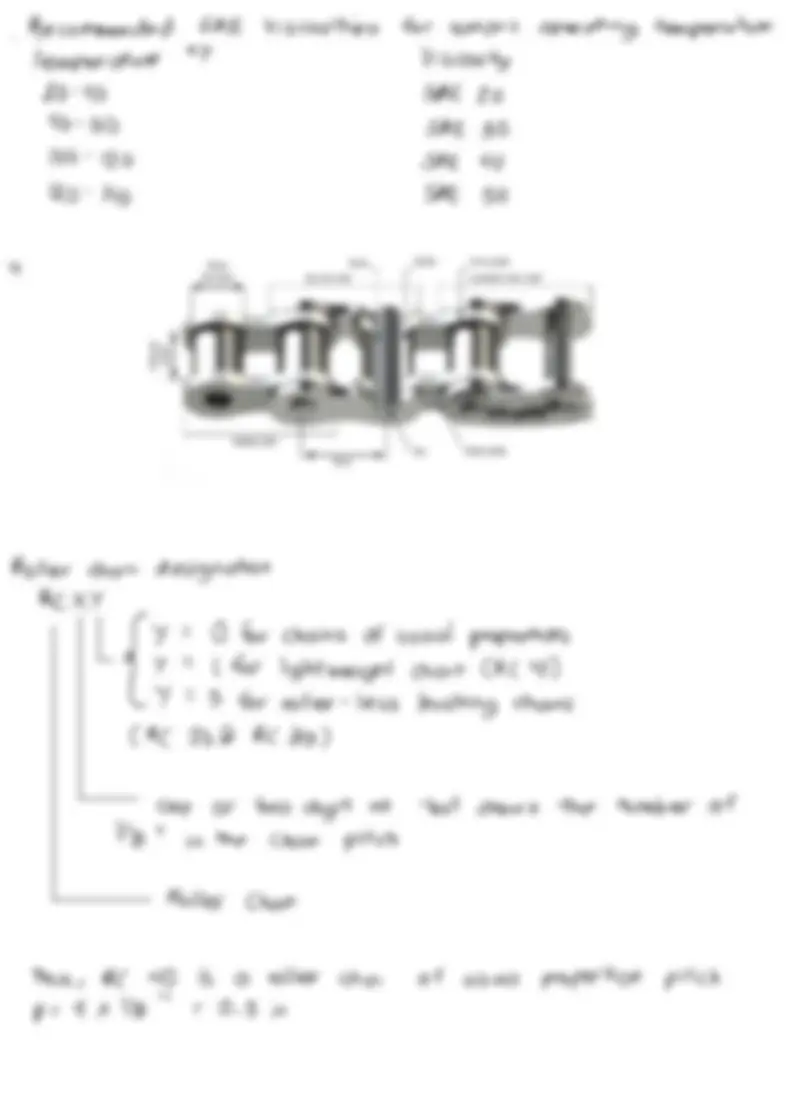
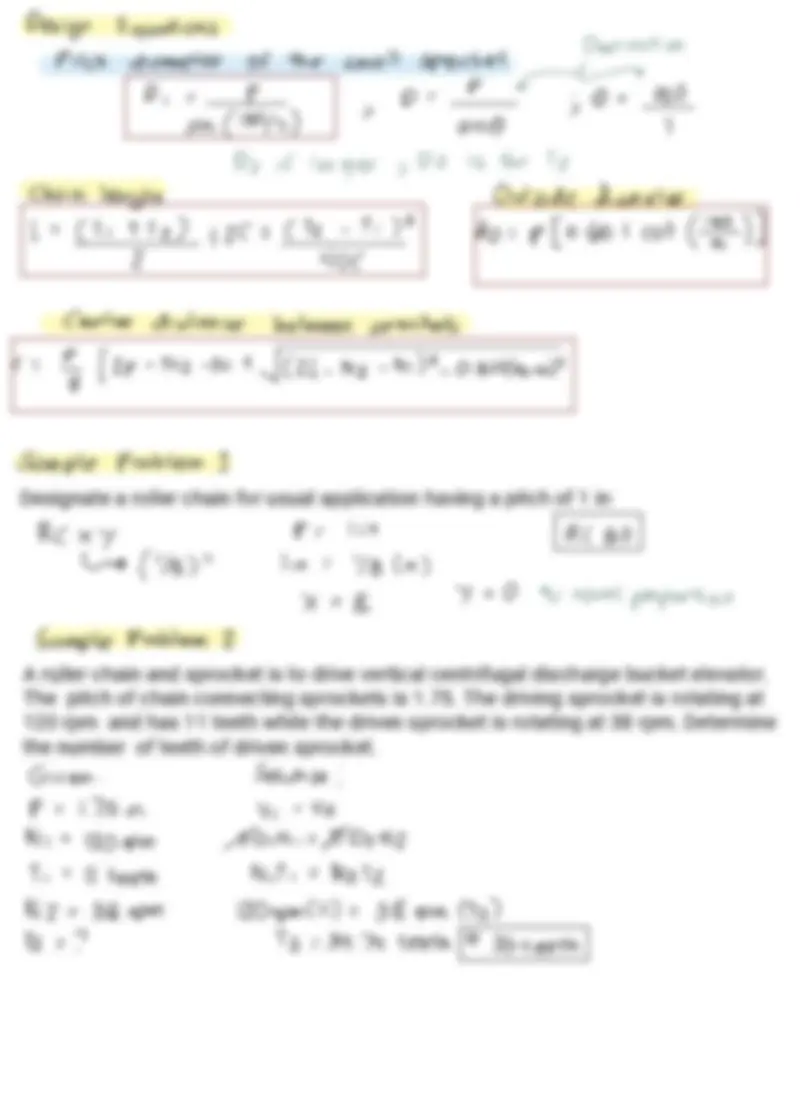
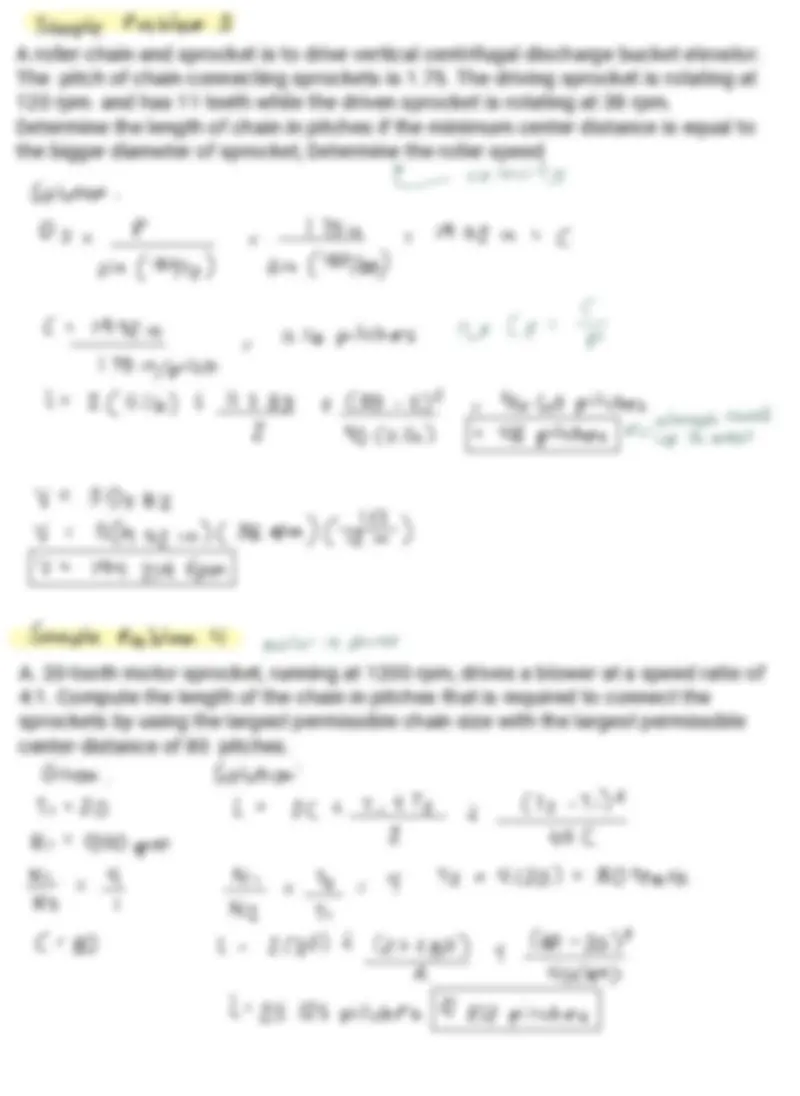
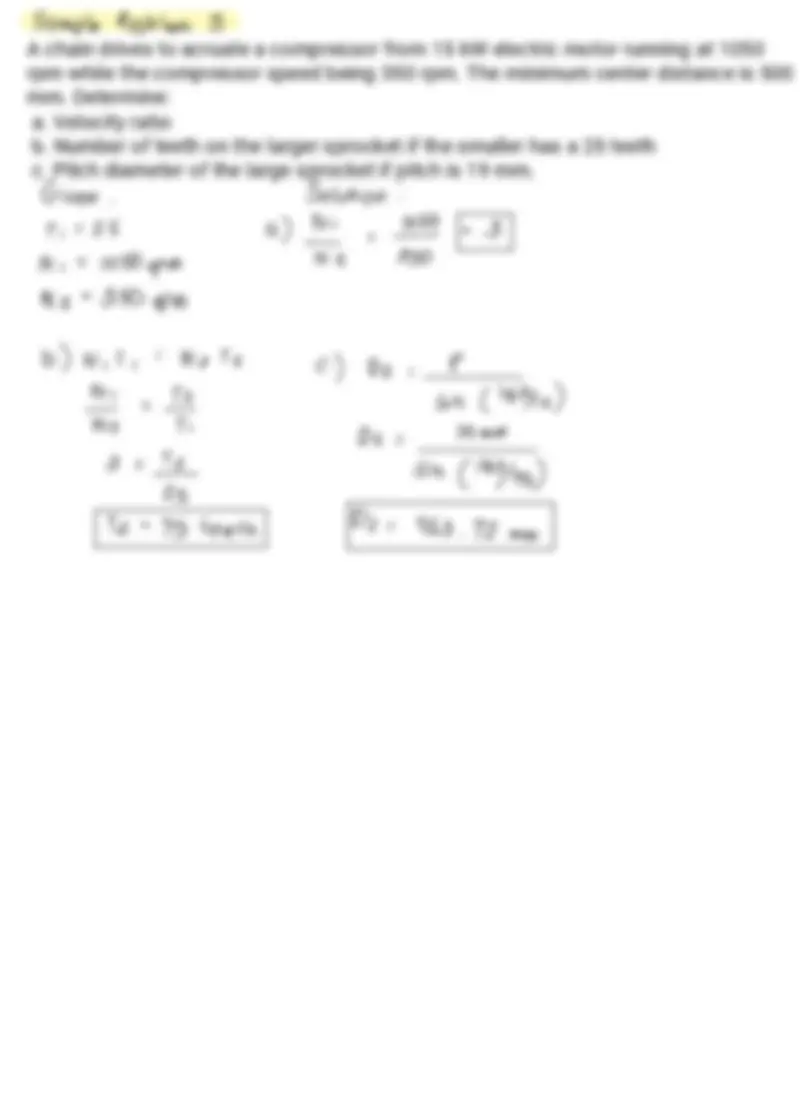
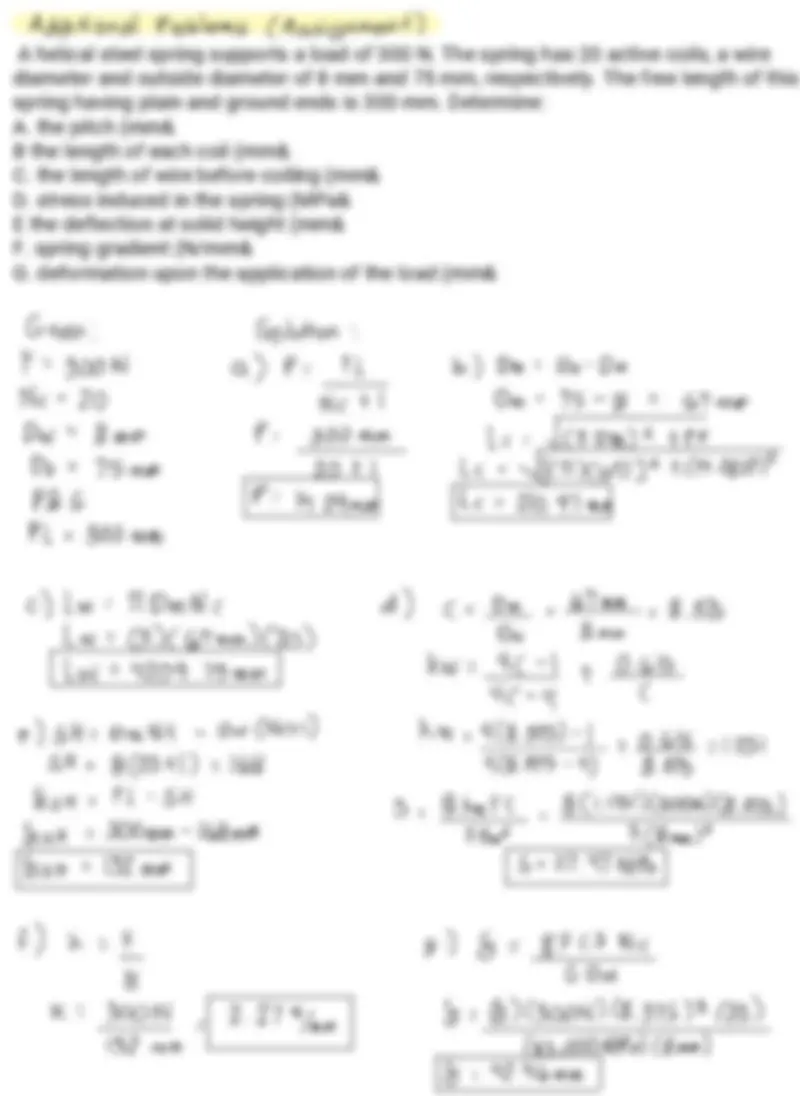
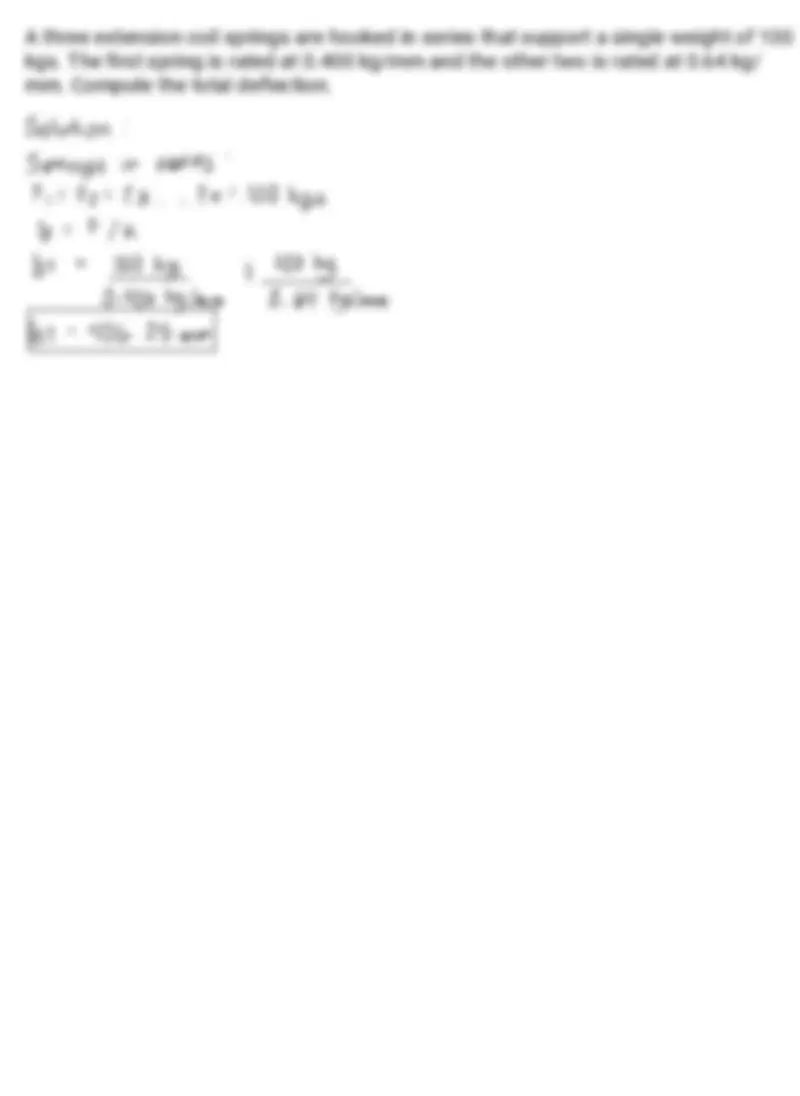

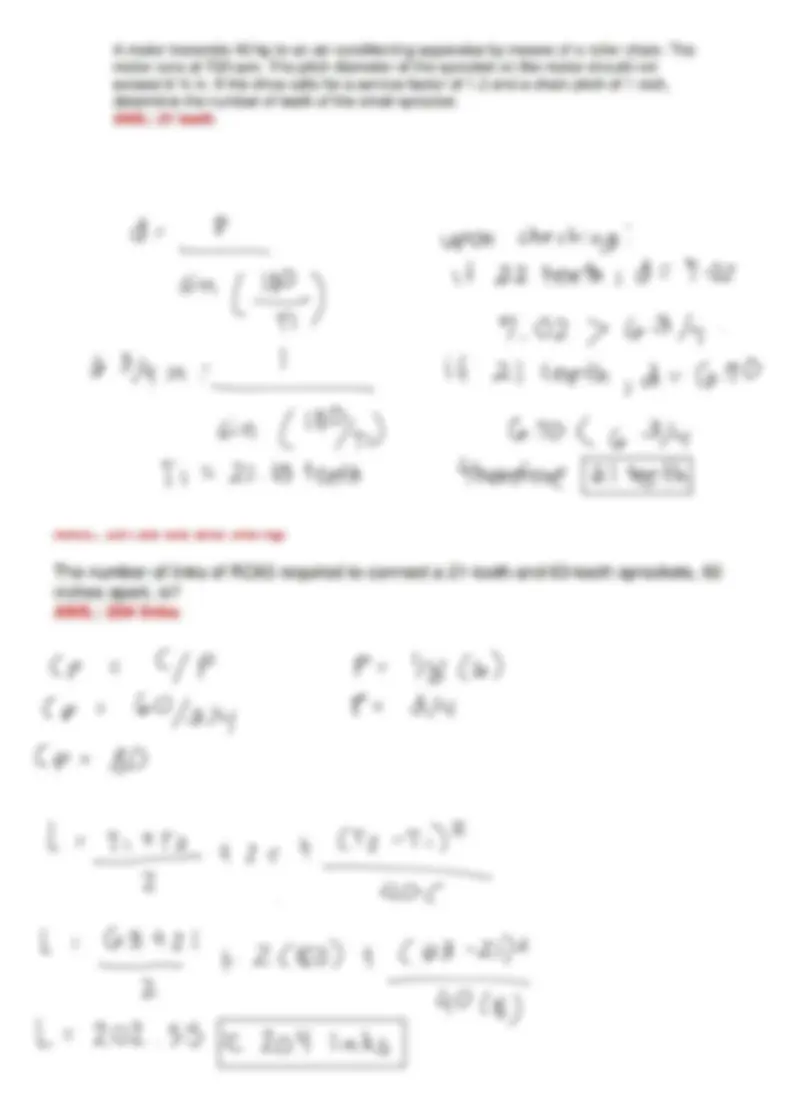
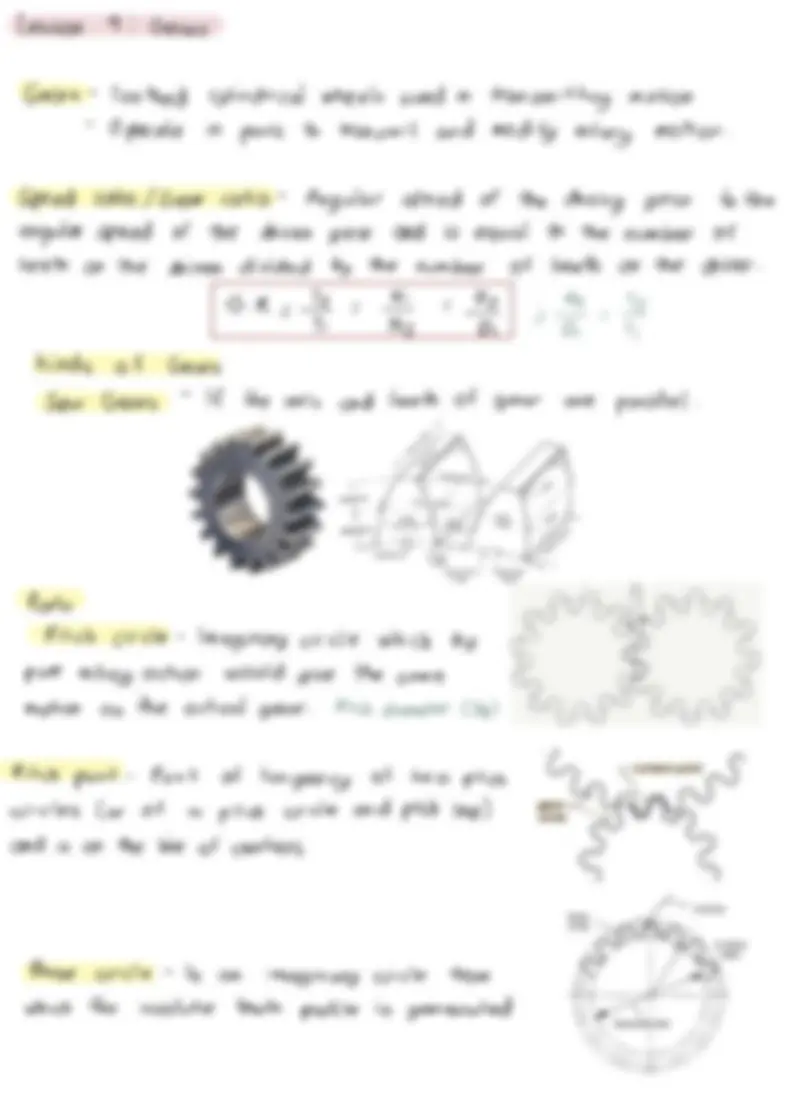
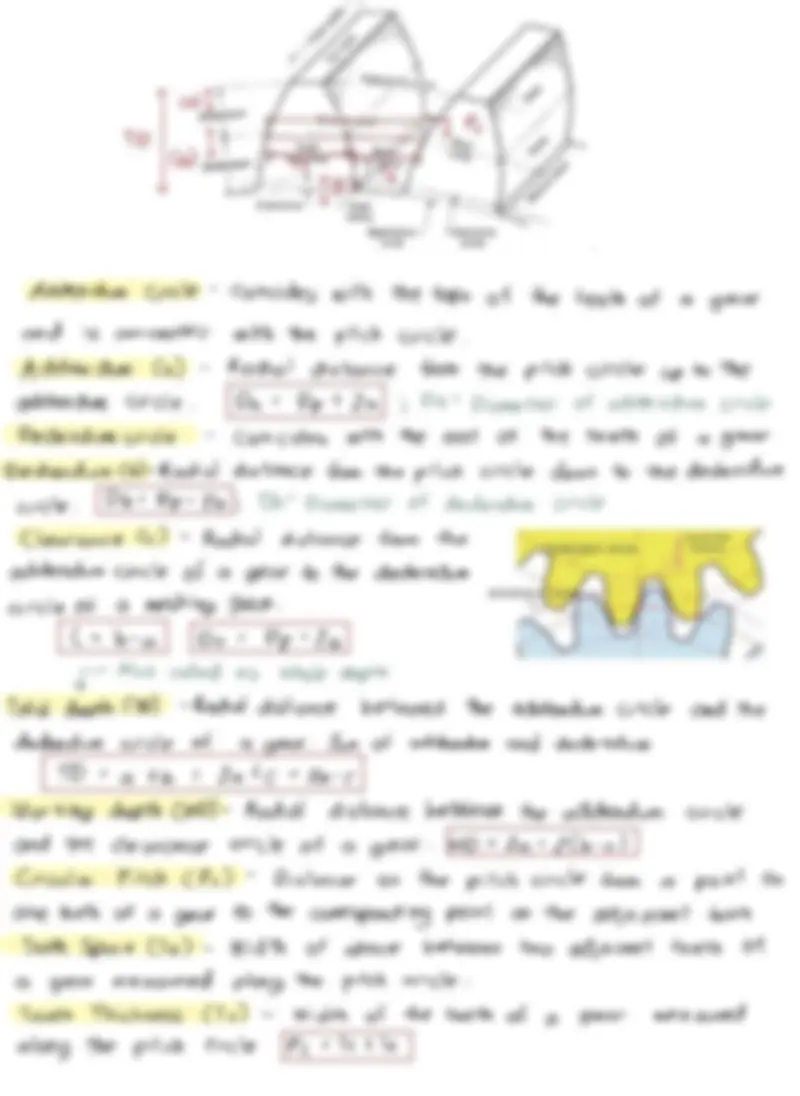
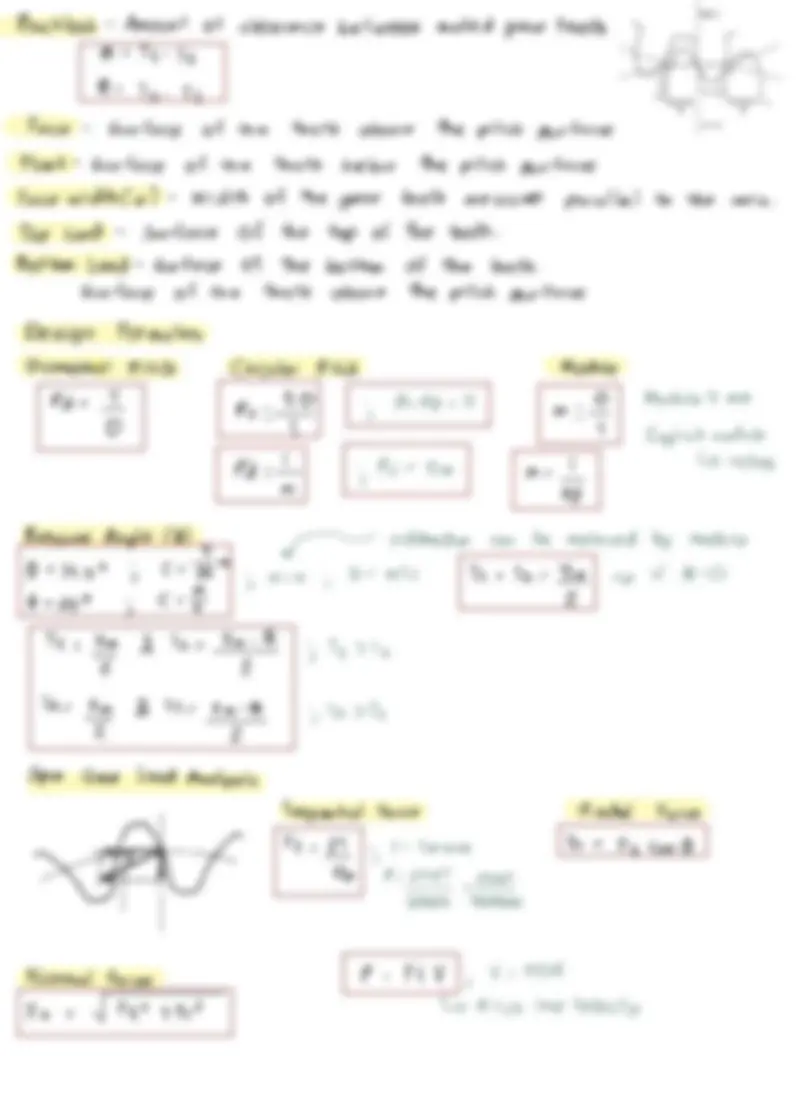
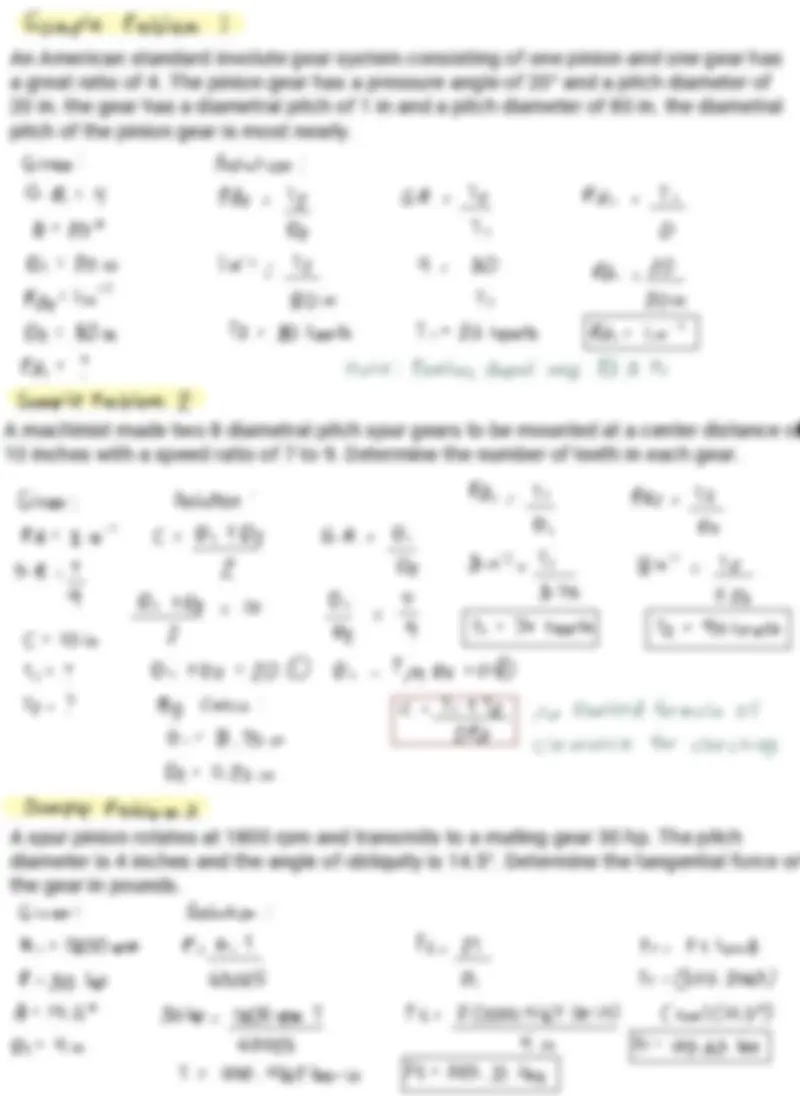
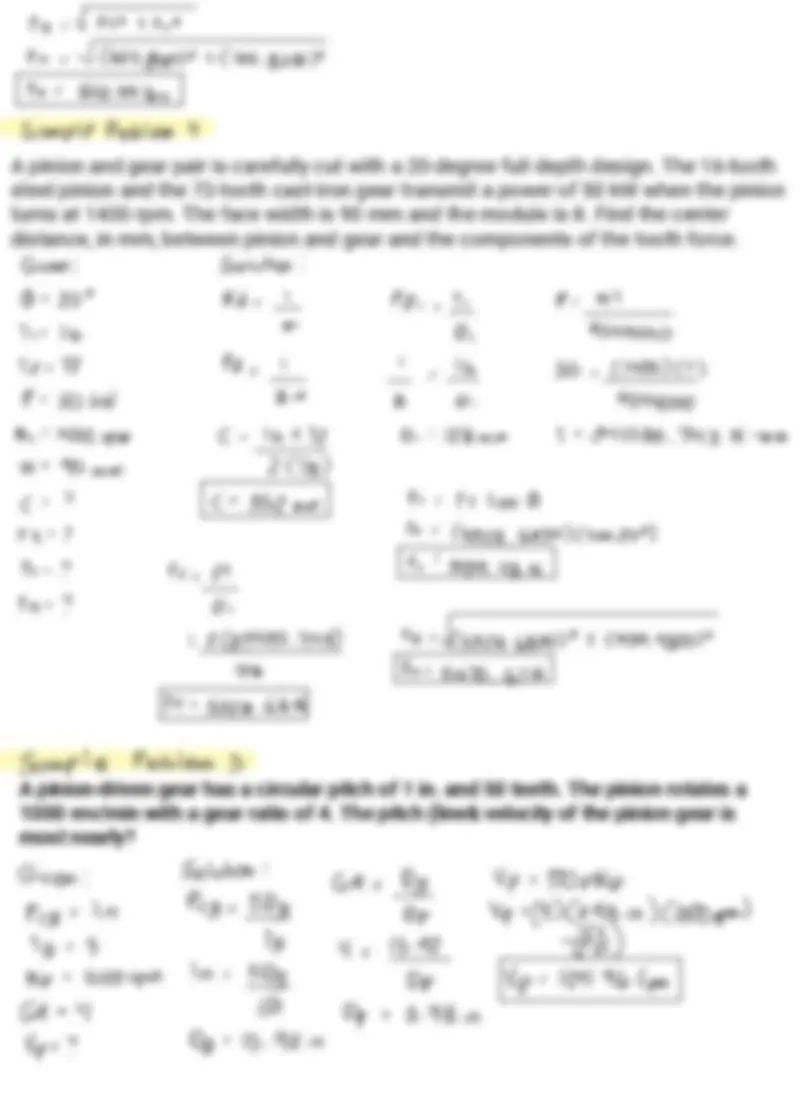
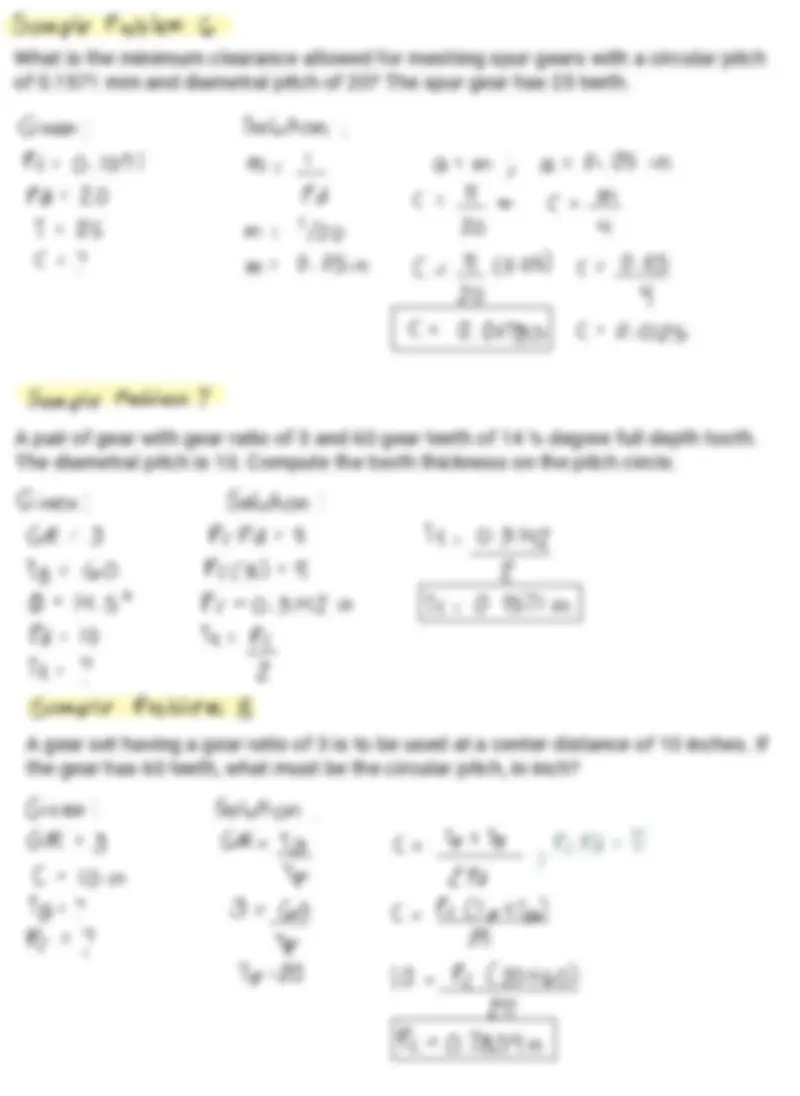
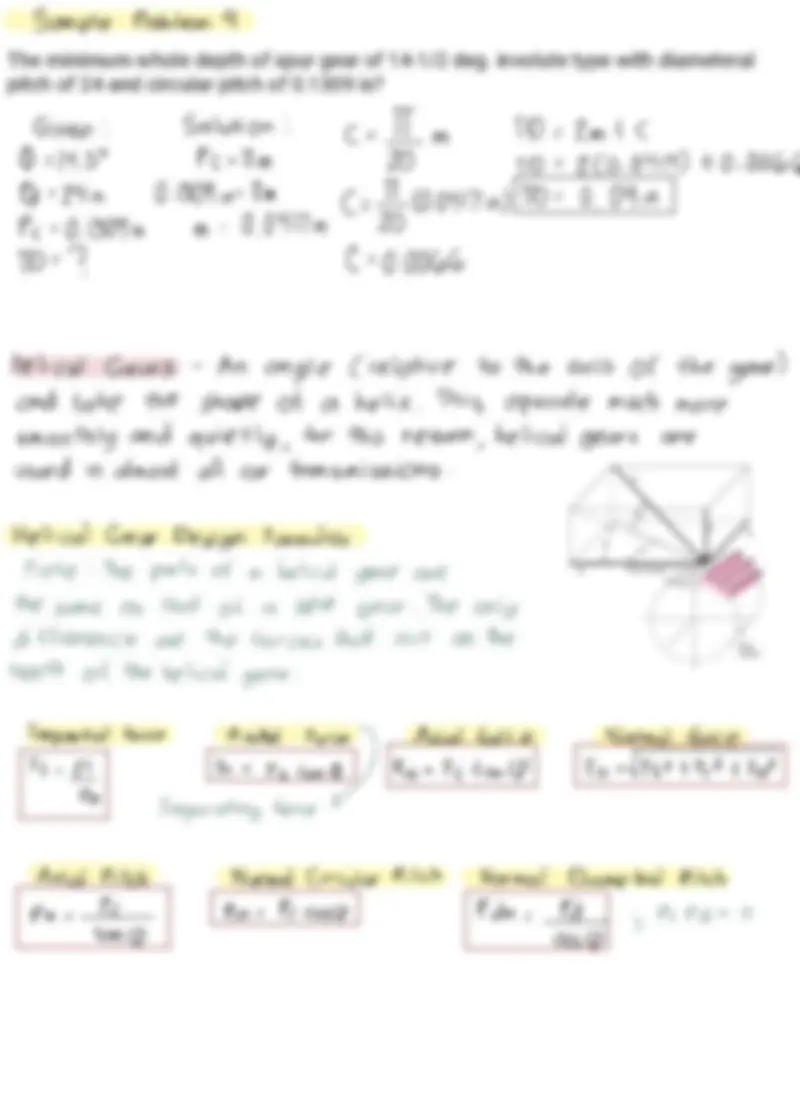
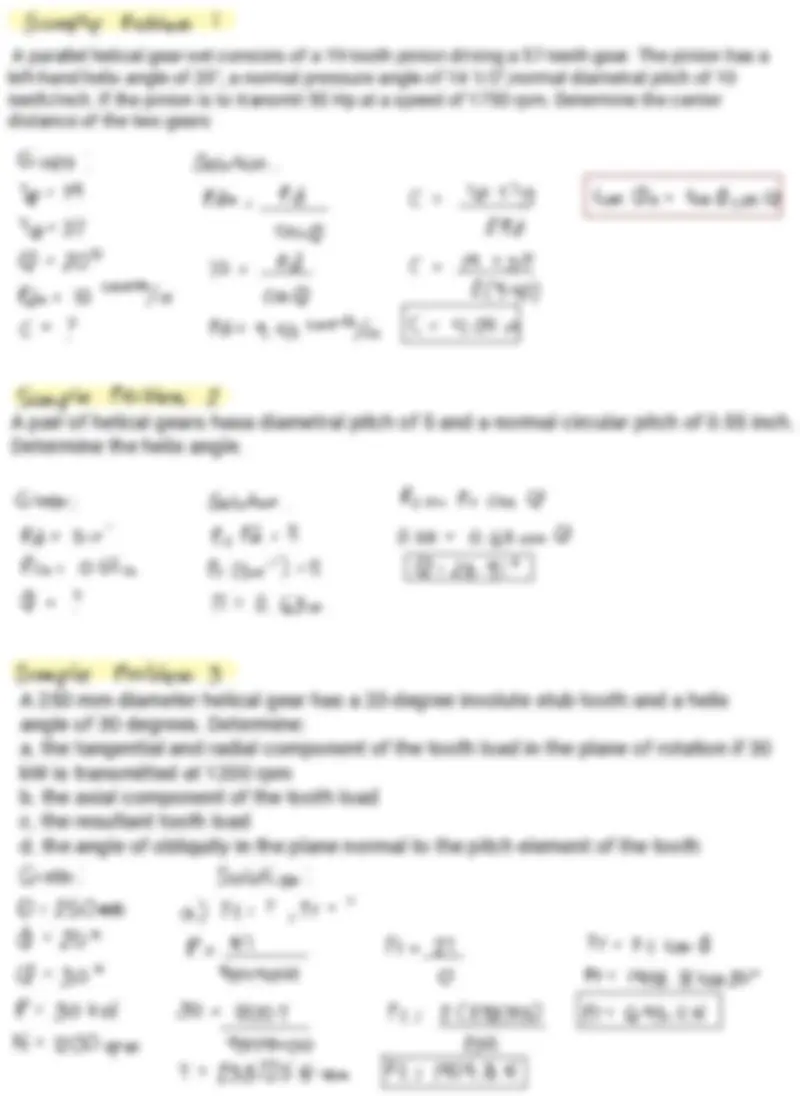
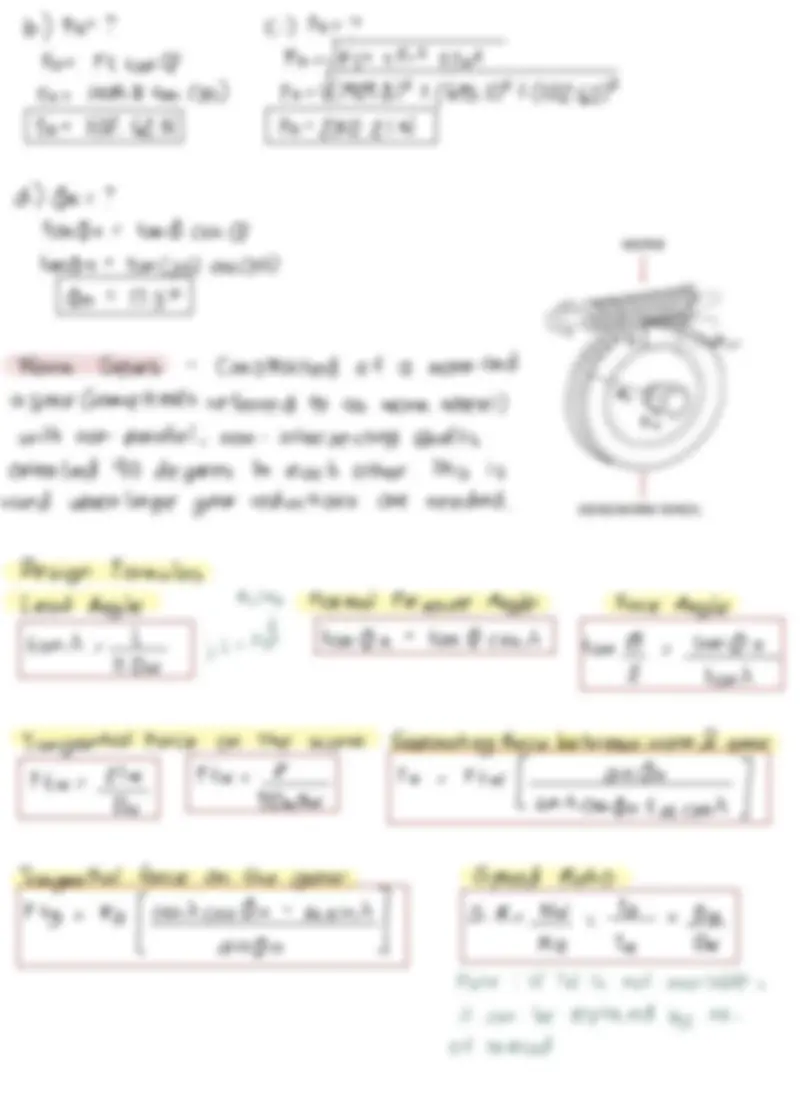
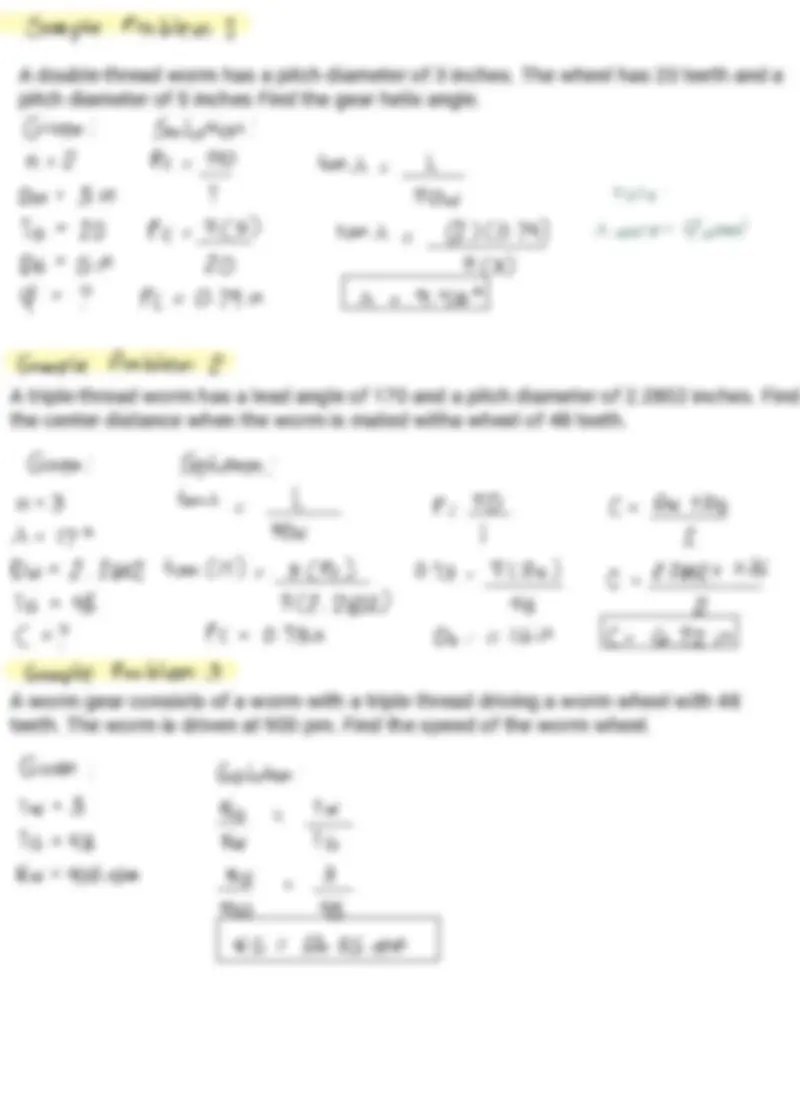
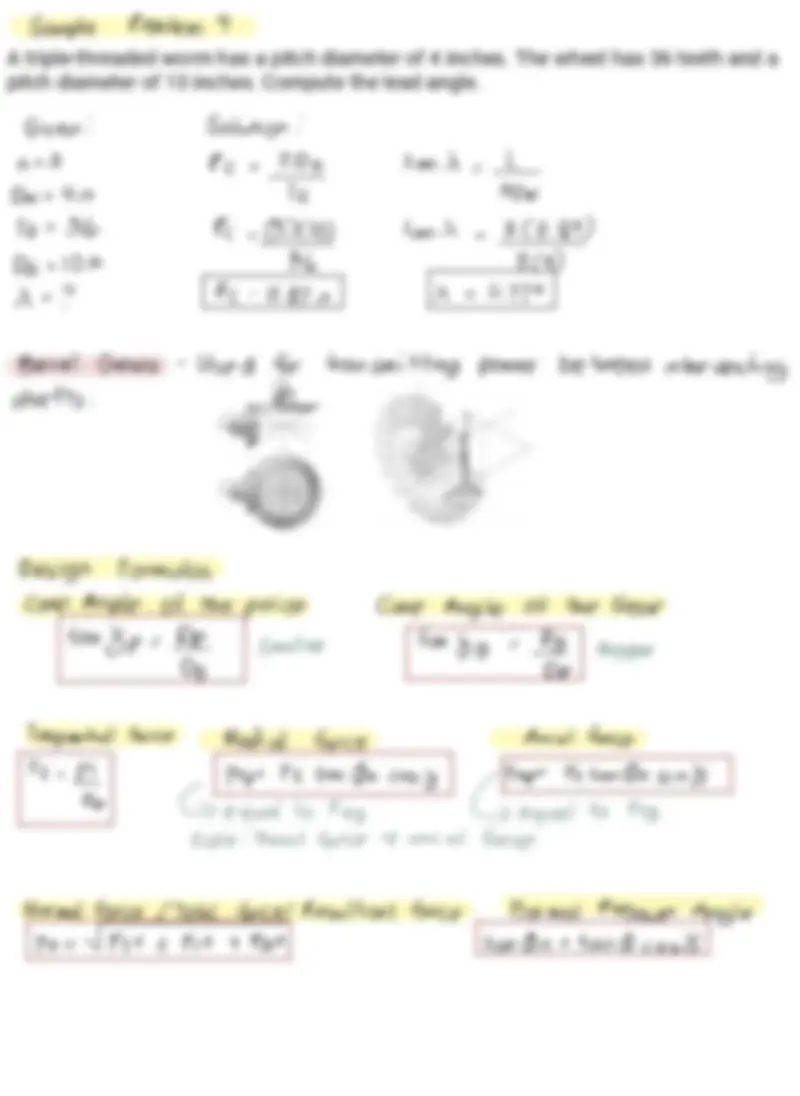
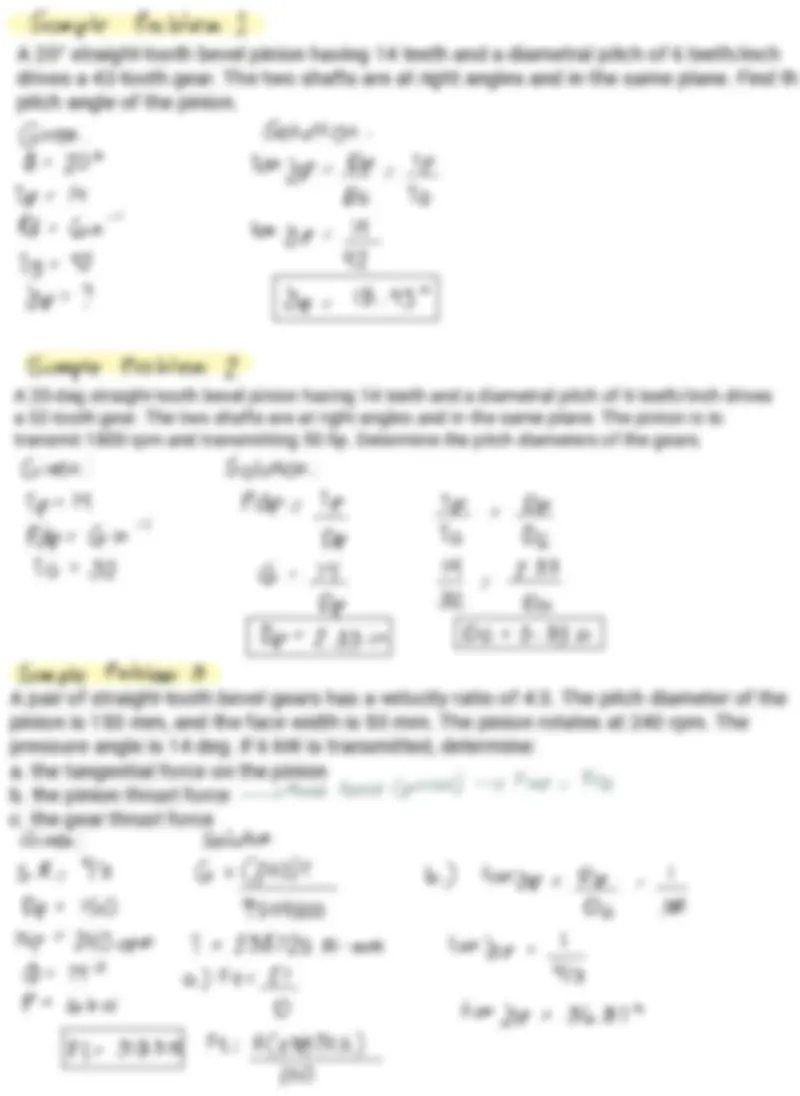
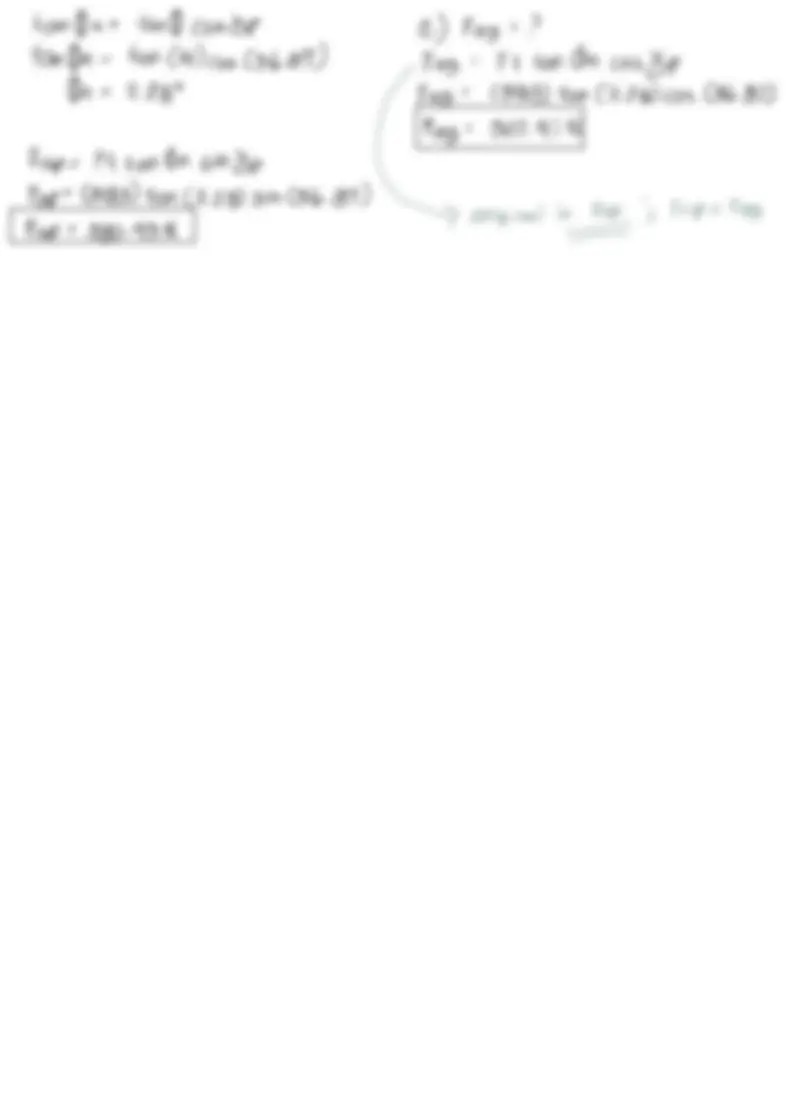


Study with the several resources on Docsity

Earn points by helping other students or get them with a premium plan


Prepare for your exams
Study with the several resources on Docsity

Earn points to download
Earn points by helping other students or get them with a premium plan
Community
Ask the community for help and clear up your study doubts
Discover the best universities in your country according to Docsity users
Free resources
Download our free guides on studying techniques, anxiety management strategies, and thesis advice from Docsity tutors
Complete Notes Of Machine Design (Exercises, Exams and Problem Solvings)
Typology: Exercises
1 / 74

This page cannot be seen from the preview
Don't miss anything!



































































A cast iron flywheel with a mean diameter of 36 in. changes speed from 300 rpm to 280 rpm while it gives up 8000 ft-lb of energy. What is the coefficient of fluctuation? Find the rim thickness for a cast iron flywheel with a width of 200 mm, a mean diameter of 1.2 m in a normal operating speed of 300 rpm, a coefficient of fluctuation of 0.05 and which is capable of handling 3000 N-m of kinetic energy. Assume that the hub and arms represent 10% of the rim weight and the specific weight of cast iron is 7200 kg/m³.
A shearing machine requires 1500 N-m of energy to shear a steel sheet and has a normal speed of 3 rev/s, slowing down to 2.8 rev/s during the shearing process, flywheel has a diameter of 75 cm. Find the required weight of the flywheel in kg. A machine is to punch a 25-mm diameter hole from a 19-mm thick steel plate having an ultimate shear strength of 400 MPa. A flywheel is to be designed with a mean diameter of 1 meter, maximum operating speed of 200 rpm, and a coefficient of fluctuation of 0.1. The flywheel's hub and arms' weight may be taken to be 10% of the rim's weight. The width of the rim is to be five times the thickness. Determine the flywheel weight required in kg and the rim thickness in mm necessary if the density is 7200 kg/m³.
A simple band brake has a 76 cm drum and fitted with a steel band 2/5 cm thick lined with a brake lining having a coefficient of friction of 0.25. The arc of contact is 245 deg. and the drum is attached to a 60 cm hoisting drum that sustains a rope load of 820 kg. The operating force has a moment arm of 1. m and a band is attached 12 cm from the pivot point. Compute the torque just required to support the load clockwise. Compute the force required considering that the direction of rotation is reversed.
A differential band brake band has an operating lever 0.230 m long. The ends of the brake band are attached so that their operating arms are 28 mm and 152 mm long. The brake drum diameter is 61 cm, the arc of contact is 300 deg, the coefficient of friction is 0.22 and the brake band is 3 mm x 102 mm. Compute the minimum and maximum by force required at the end of the operating lever to subject this band pressure of 5.5 MPa. Compute the torque applied to the brake shaft. A band brake is to absorb 5 hp at 200 rpm. Thee maximum pressure between the lining and the drum is 120 psi. The width of the band is 3 inches and the coefficient of friction is 0.15. The diameter of the drum is 8 inches. Find the maximum and minimum band tension.